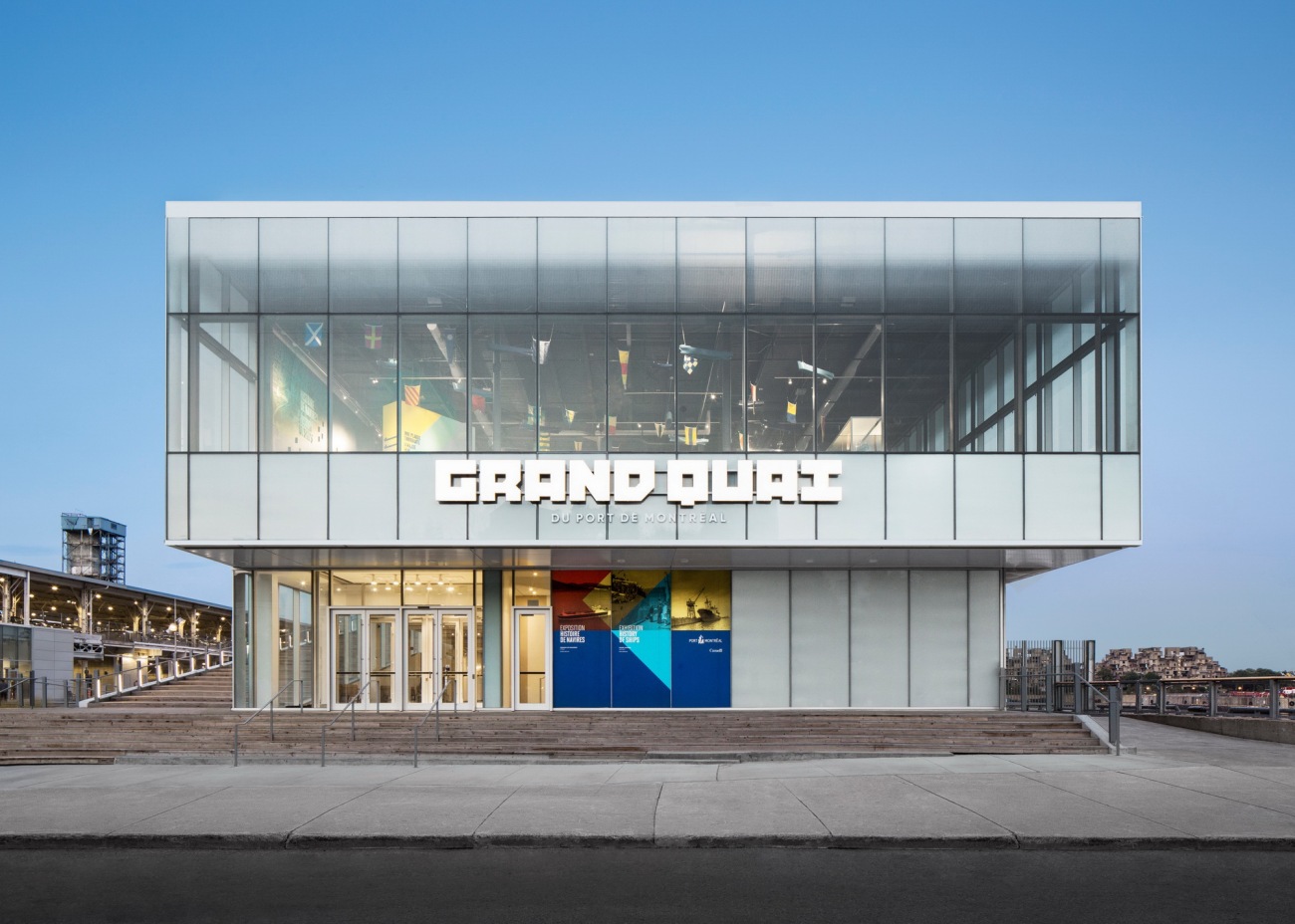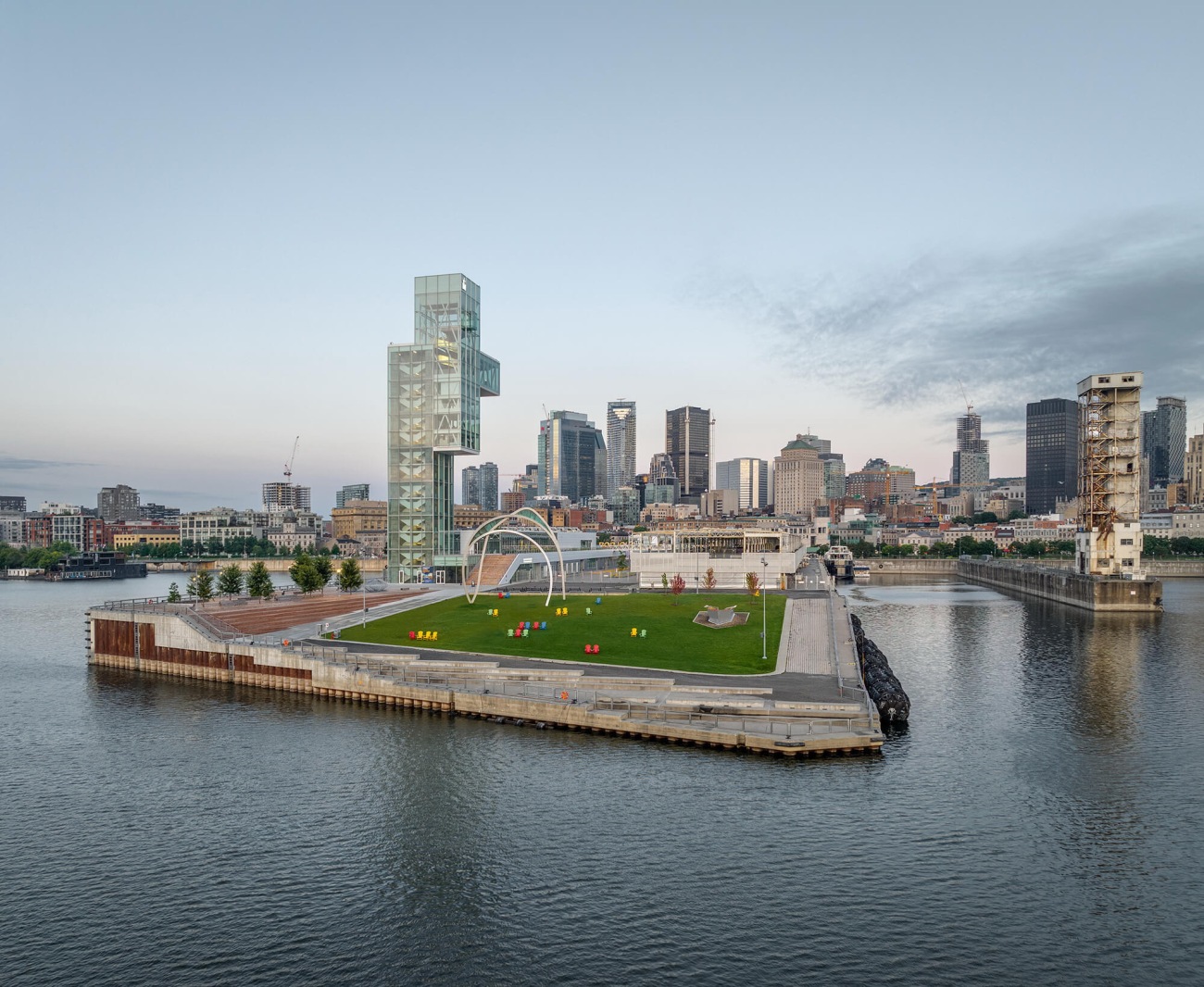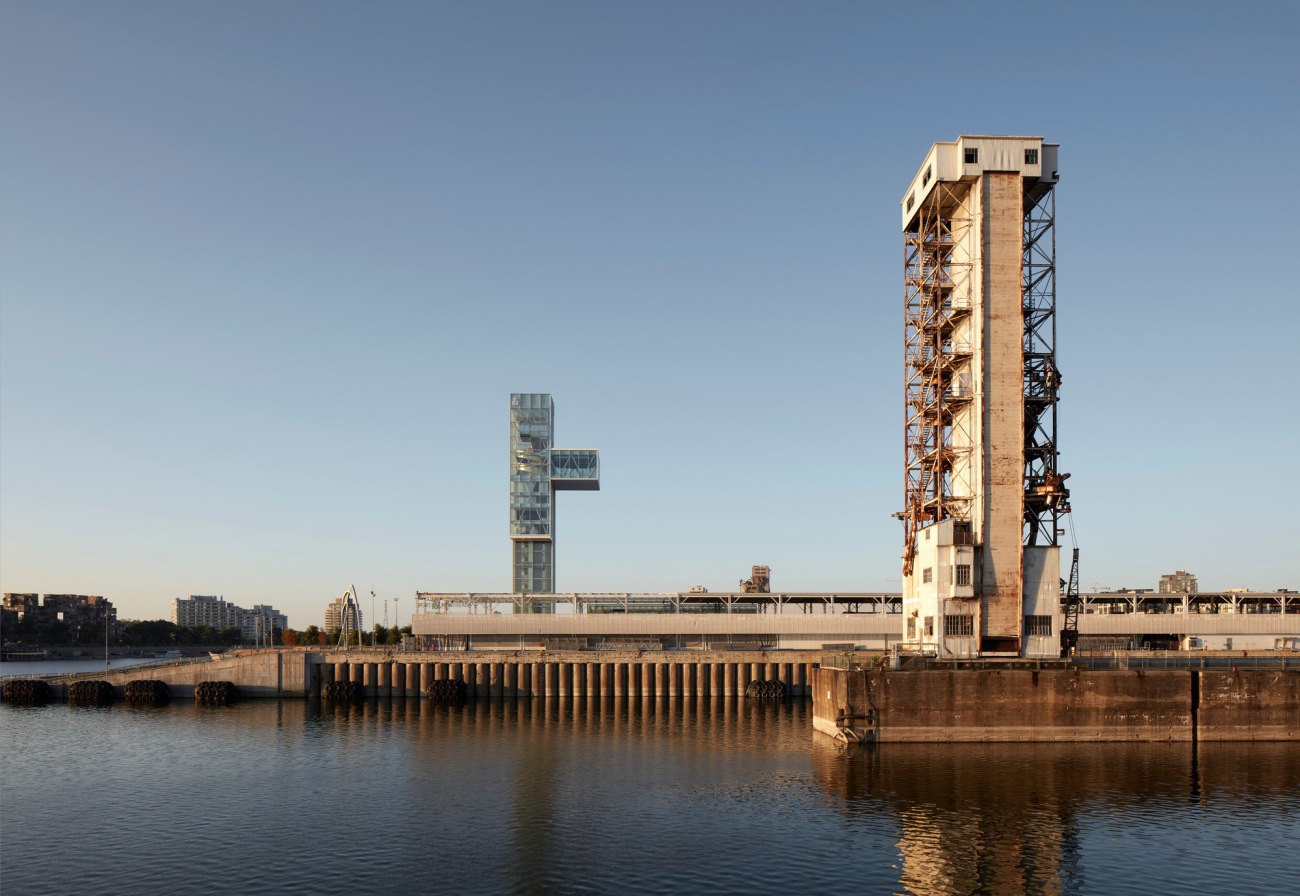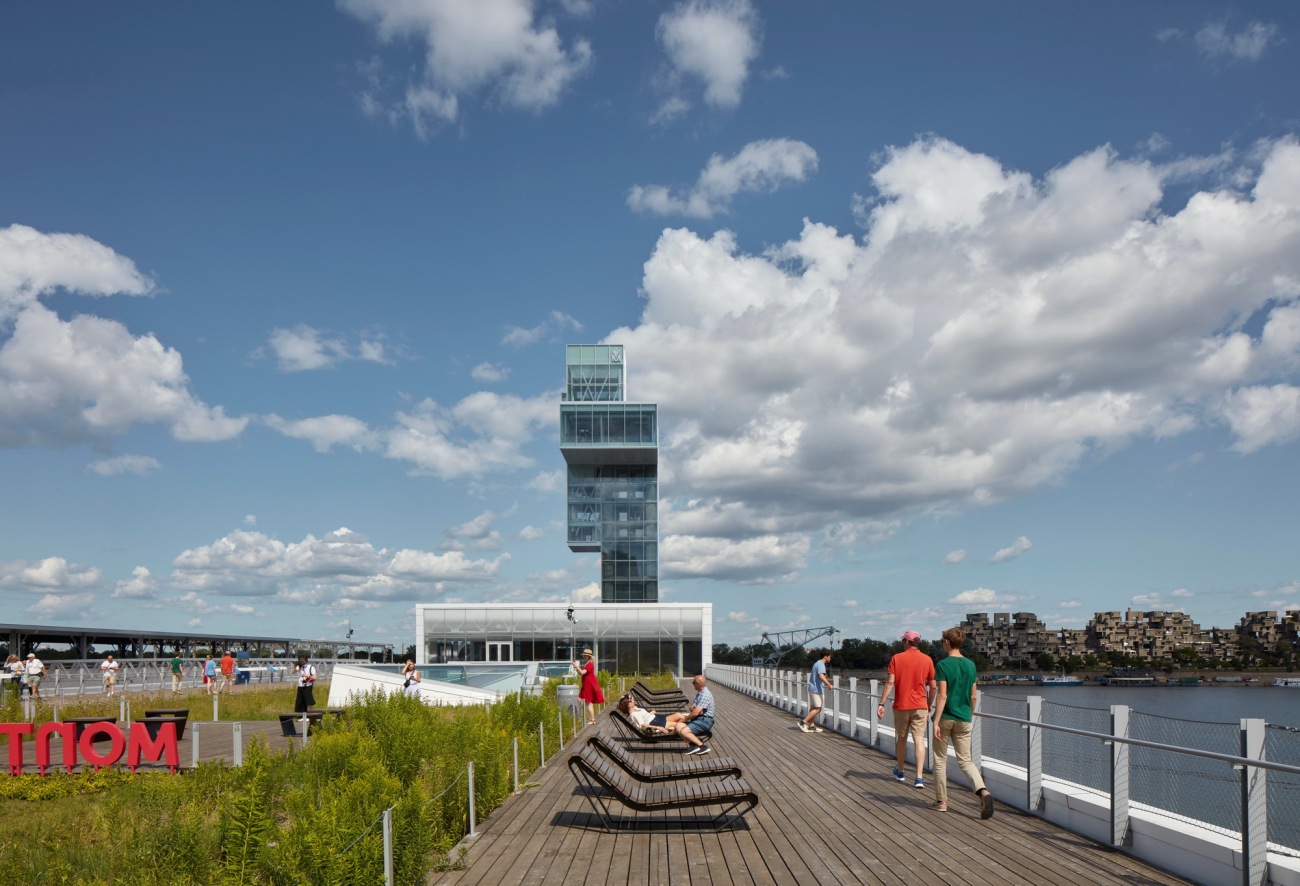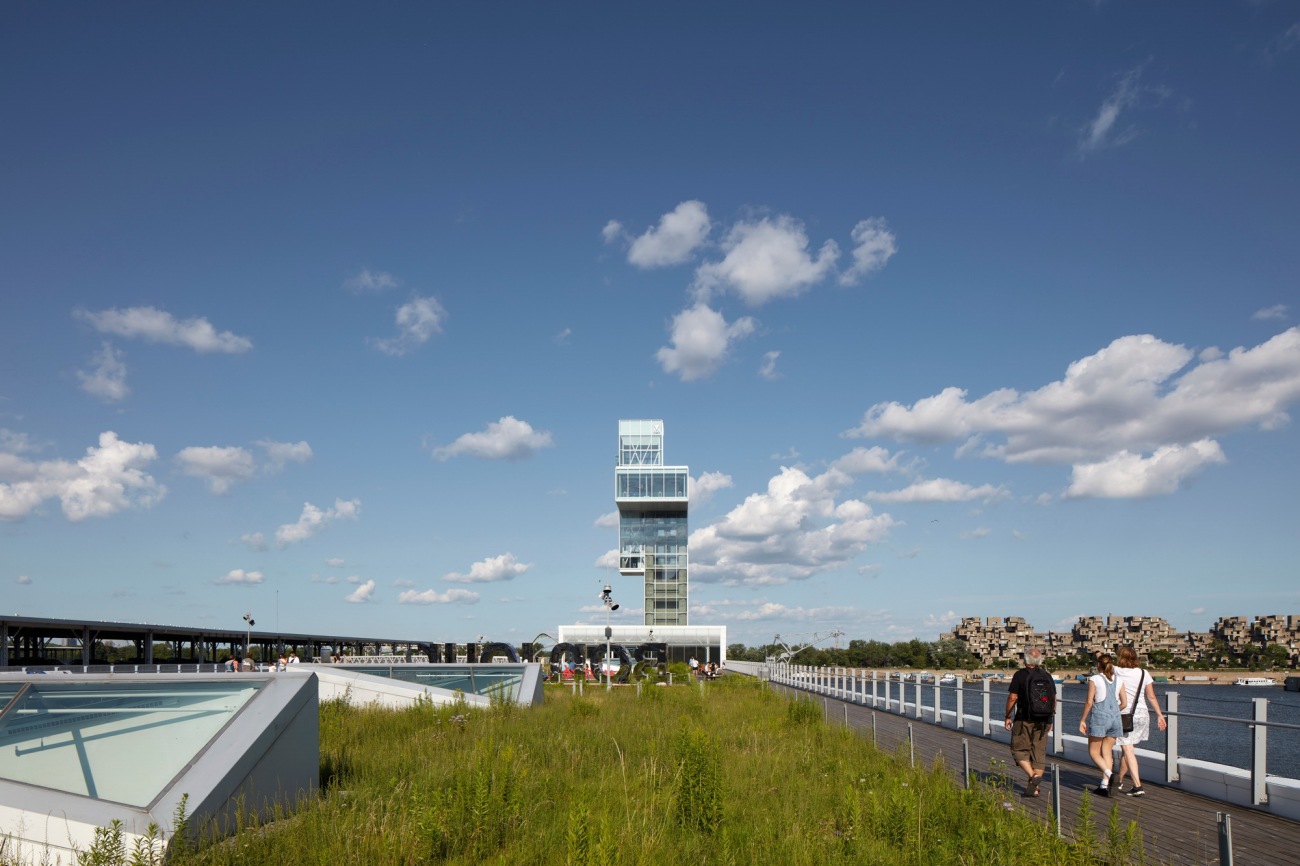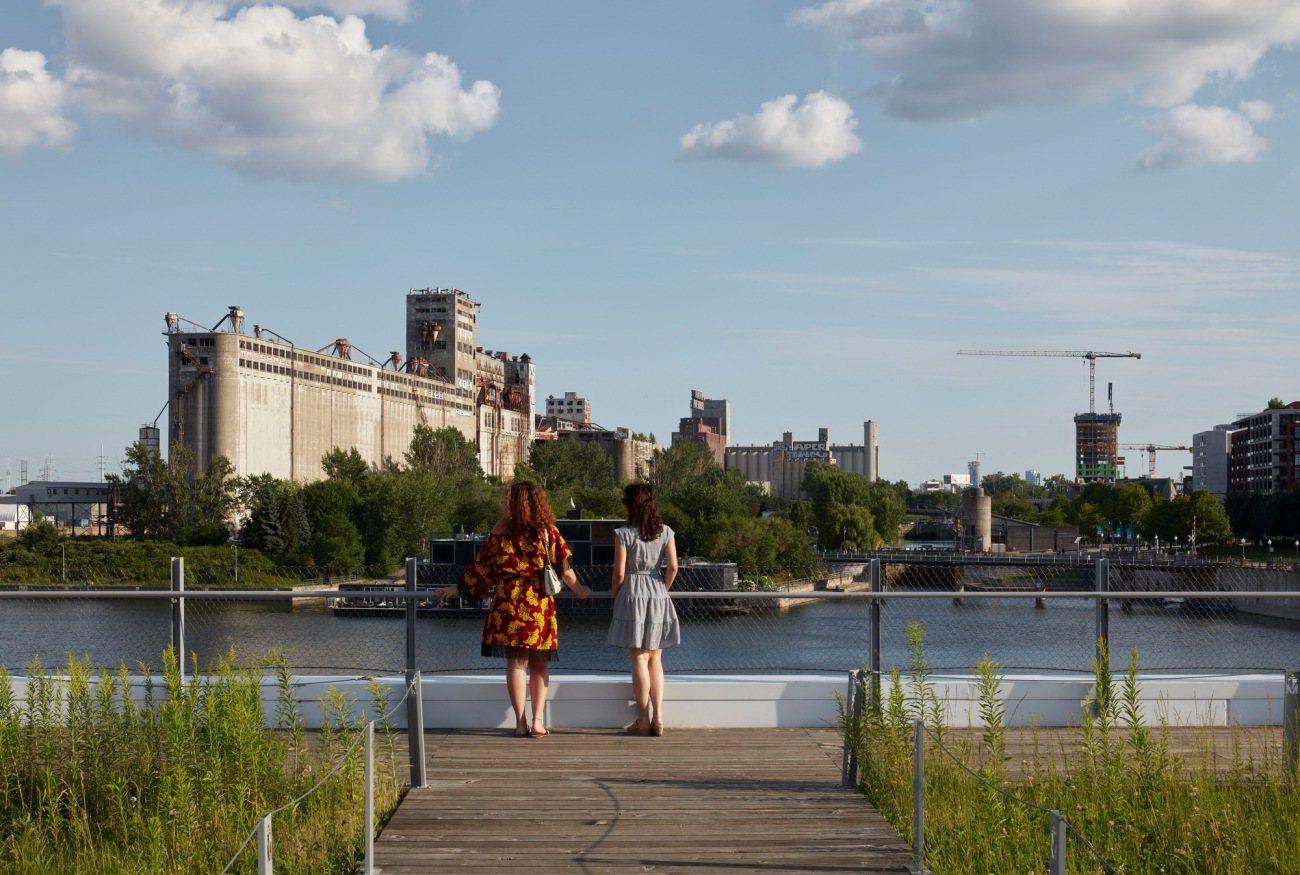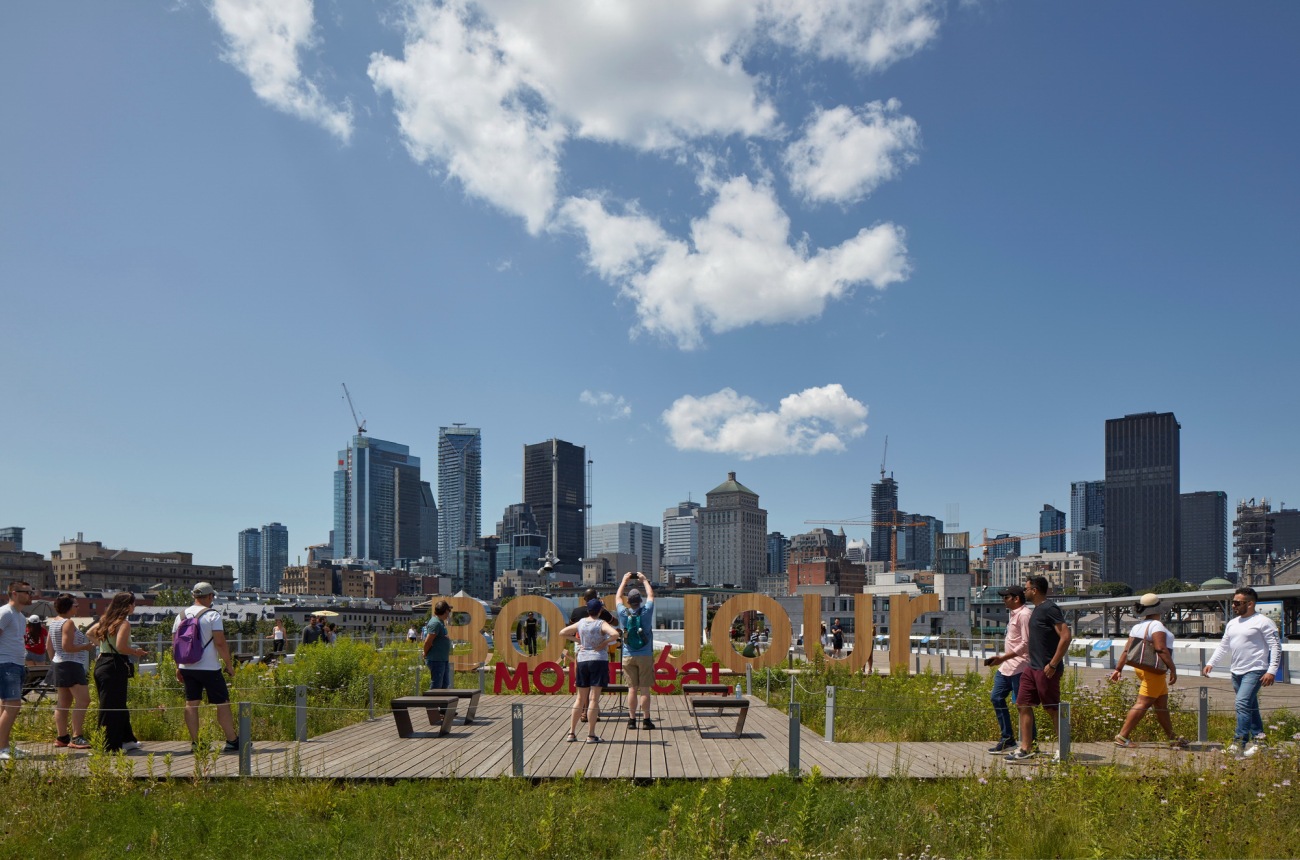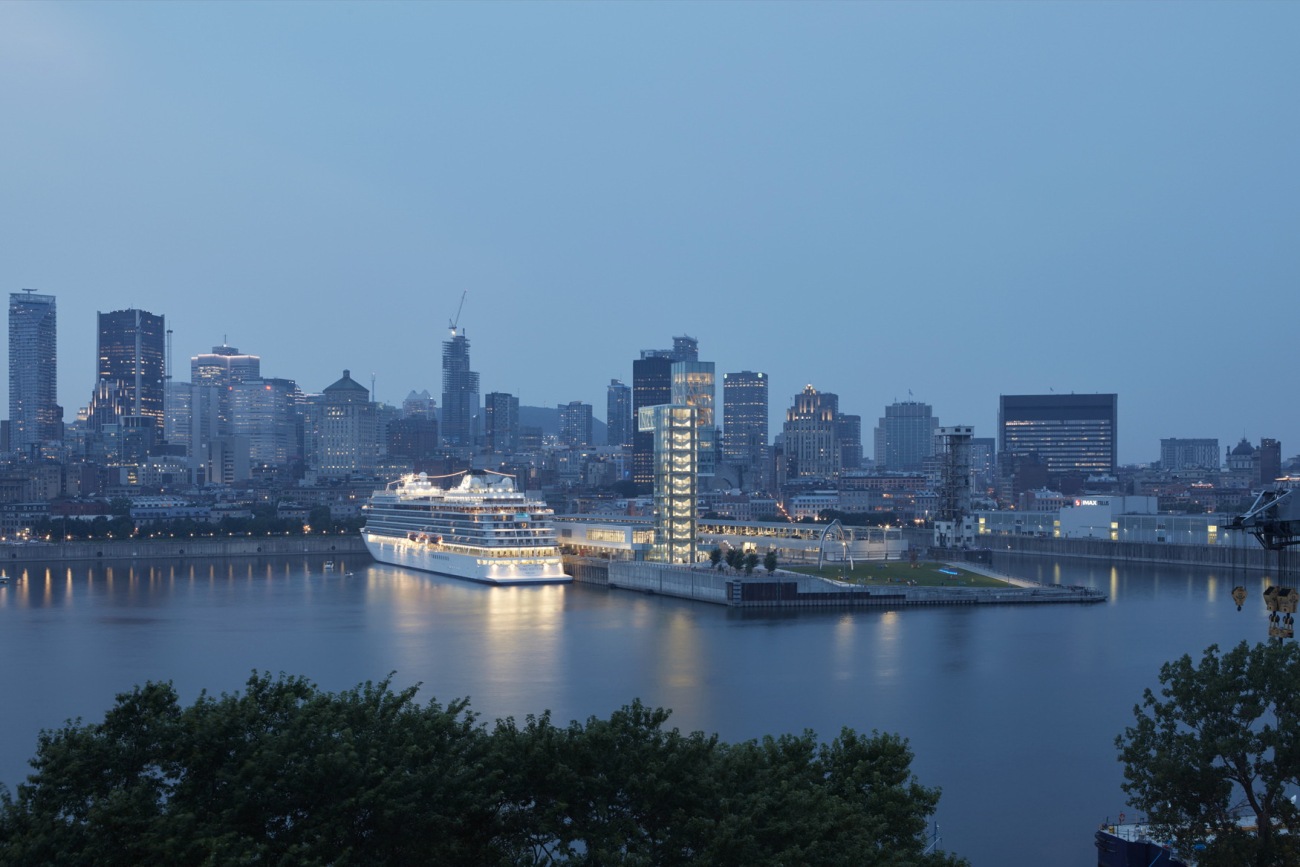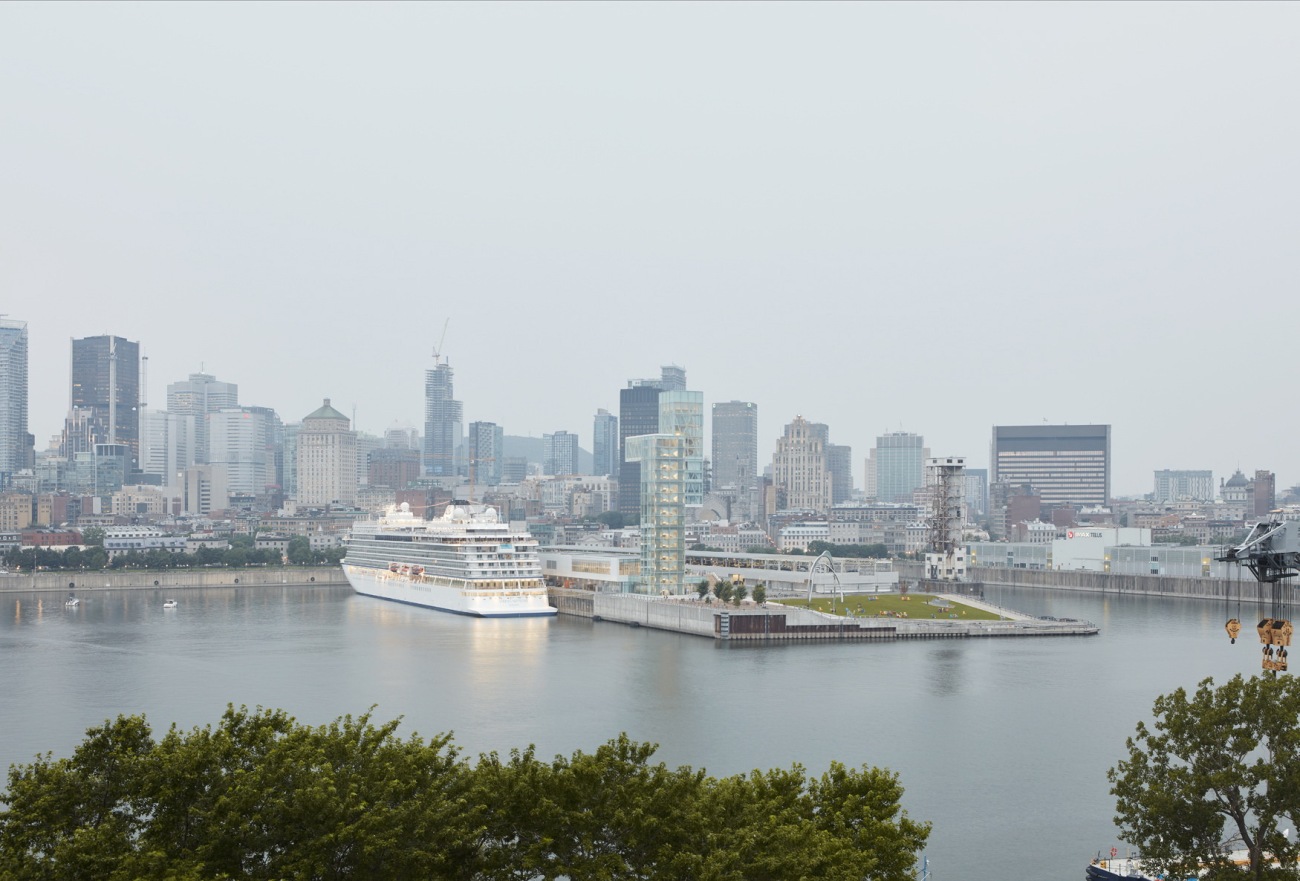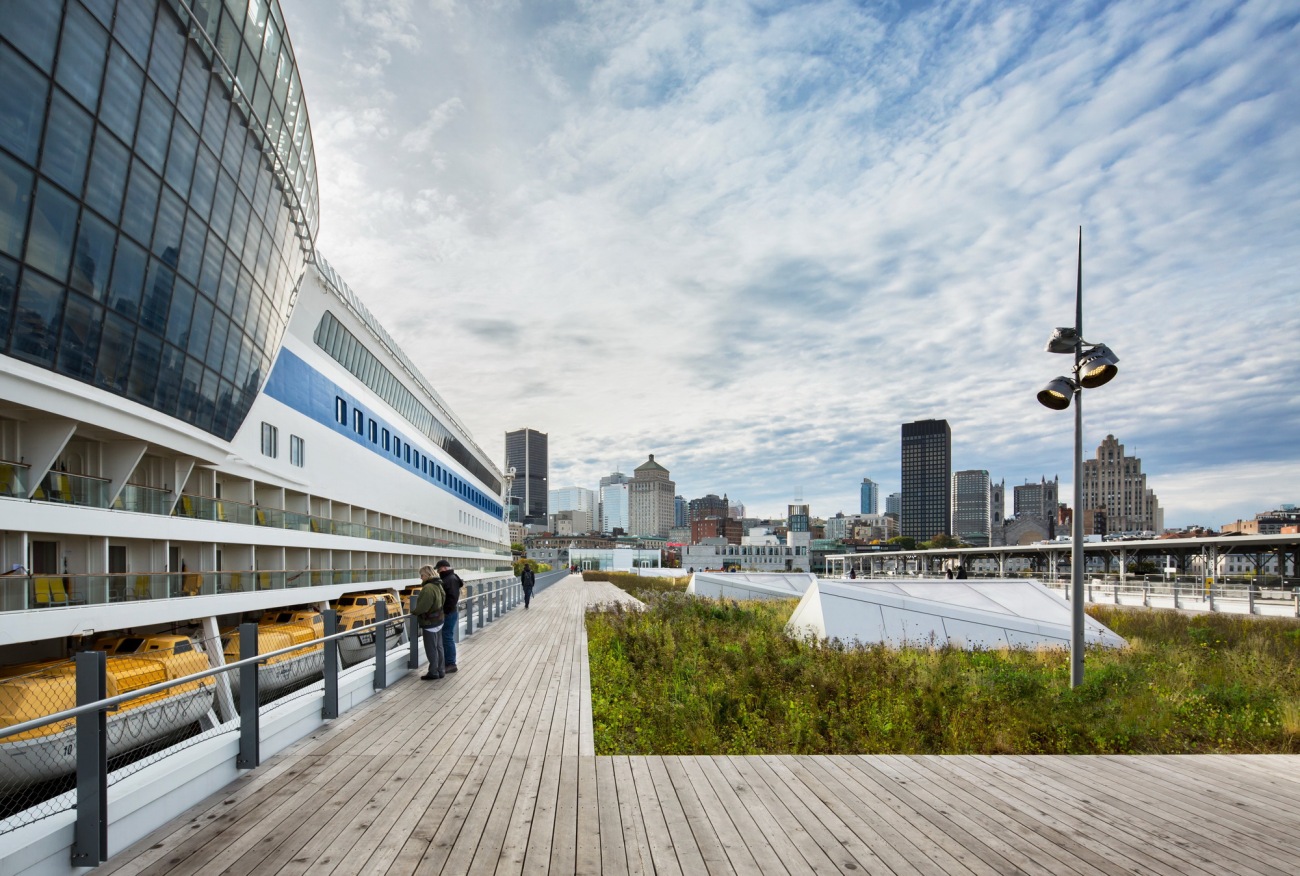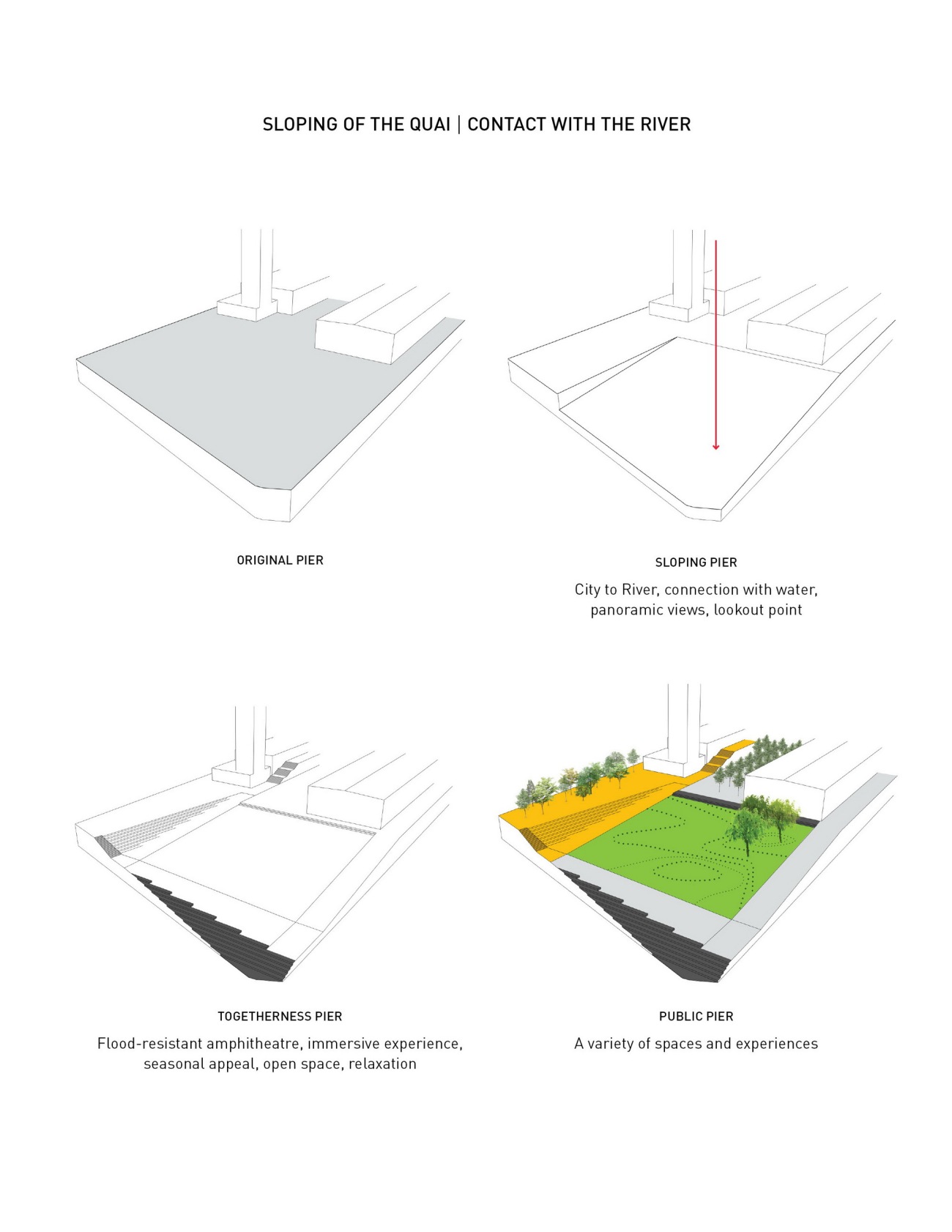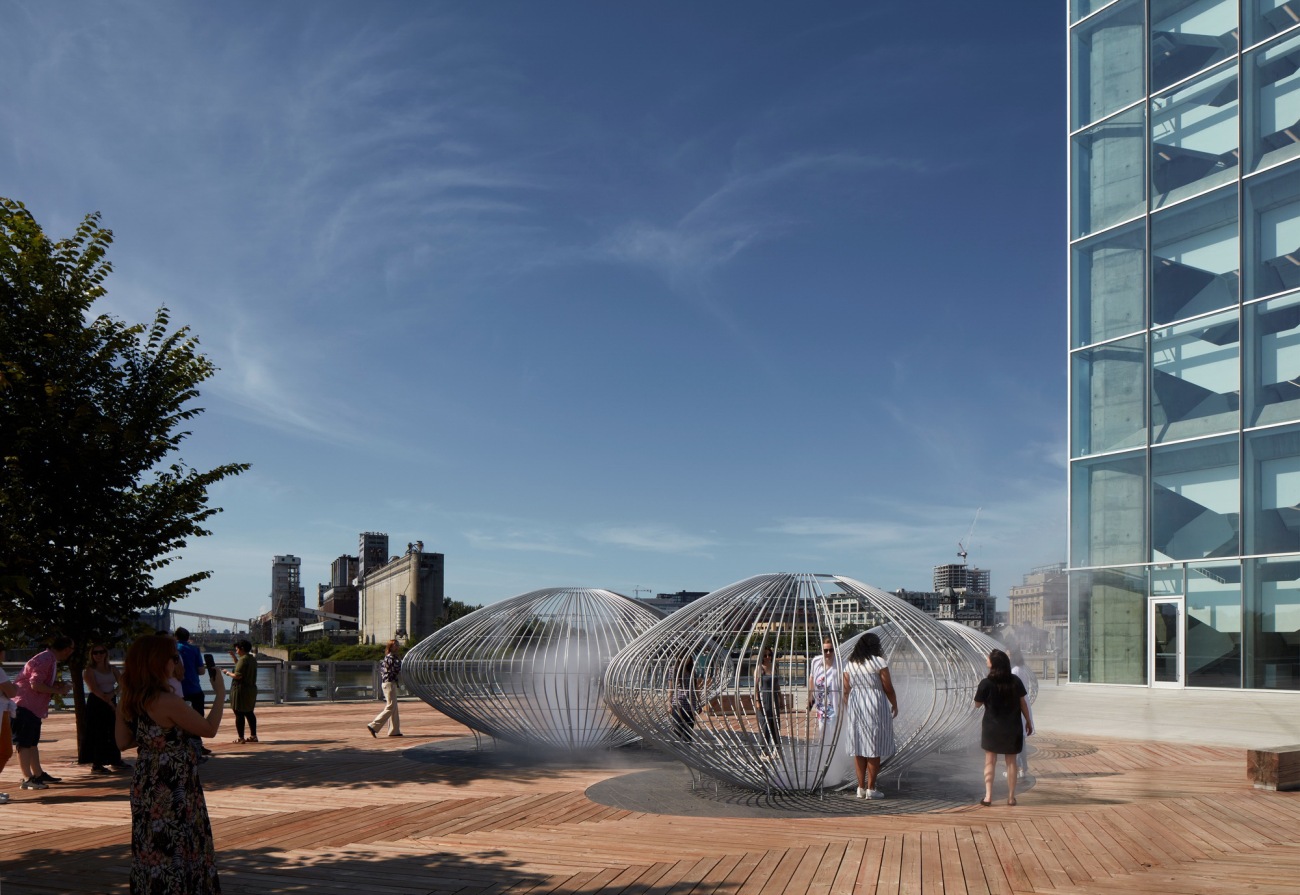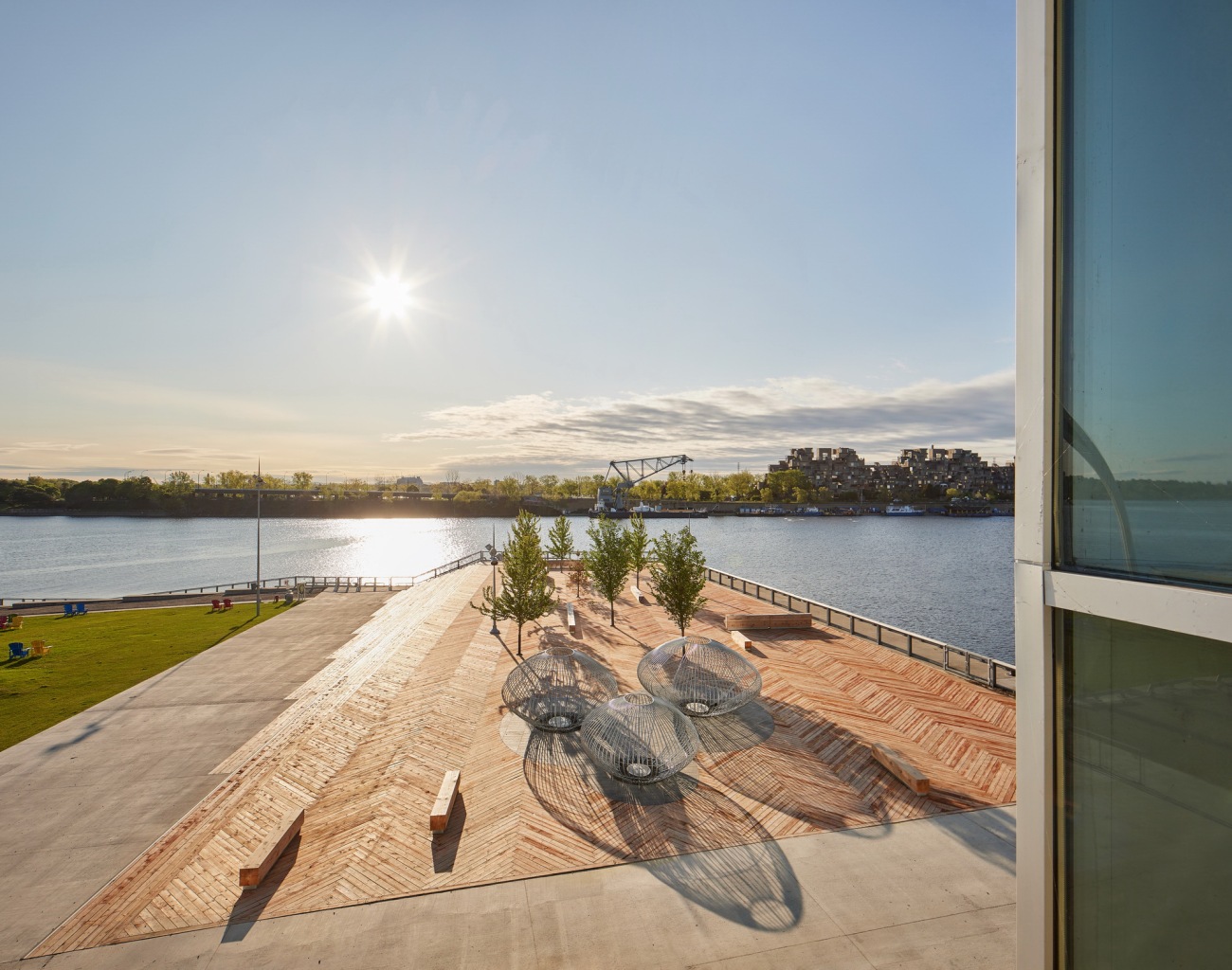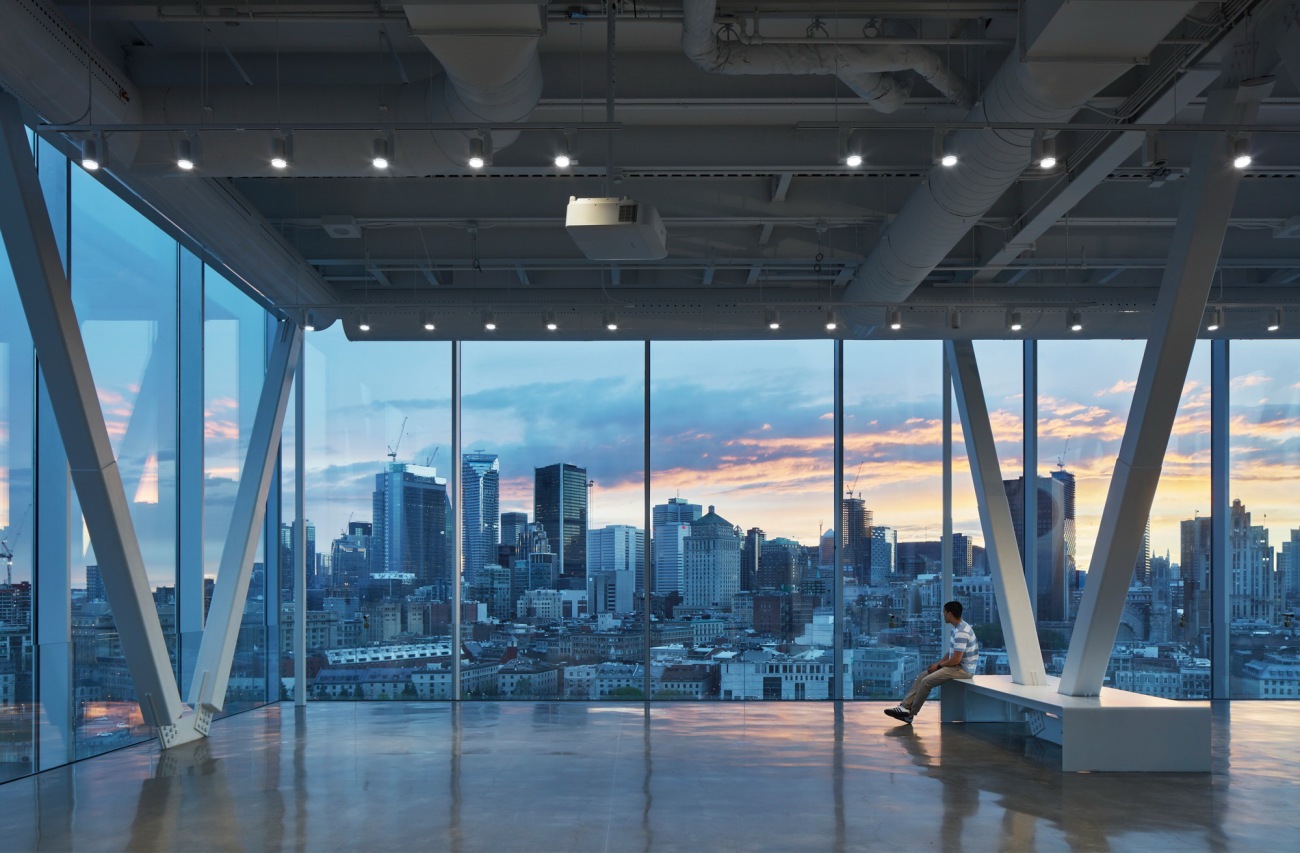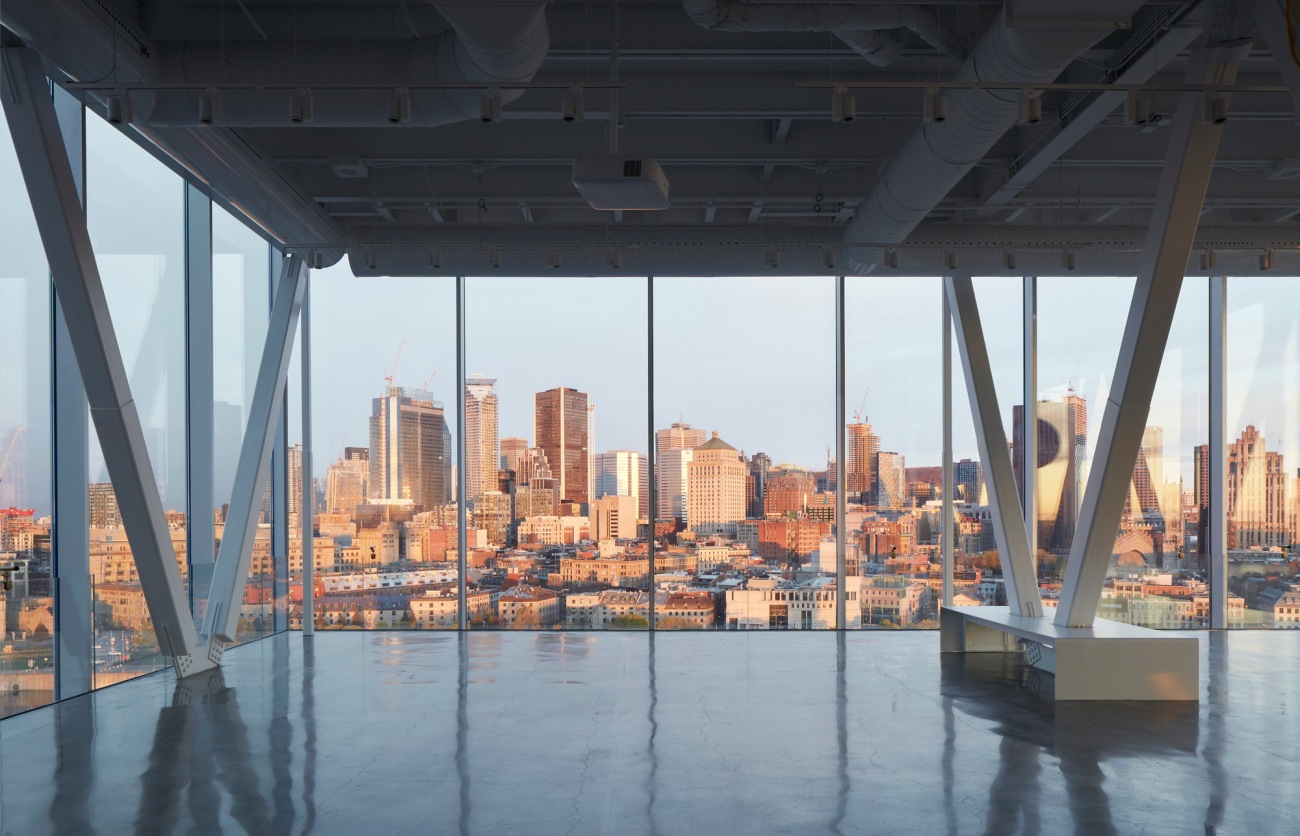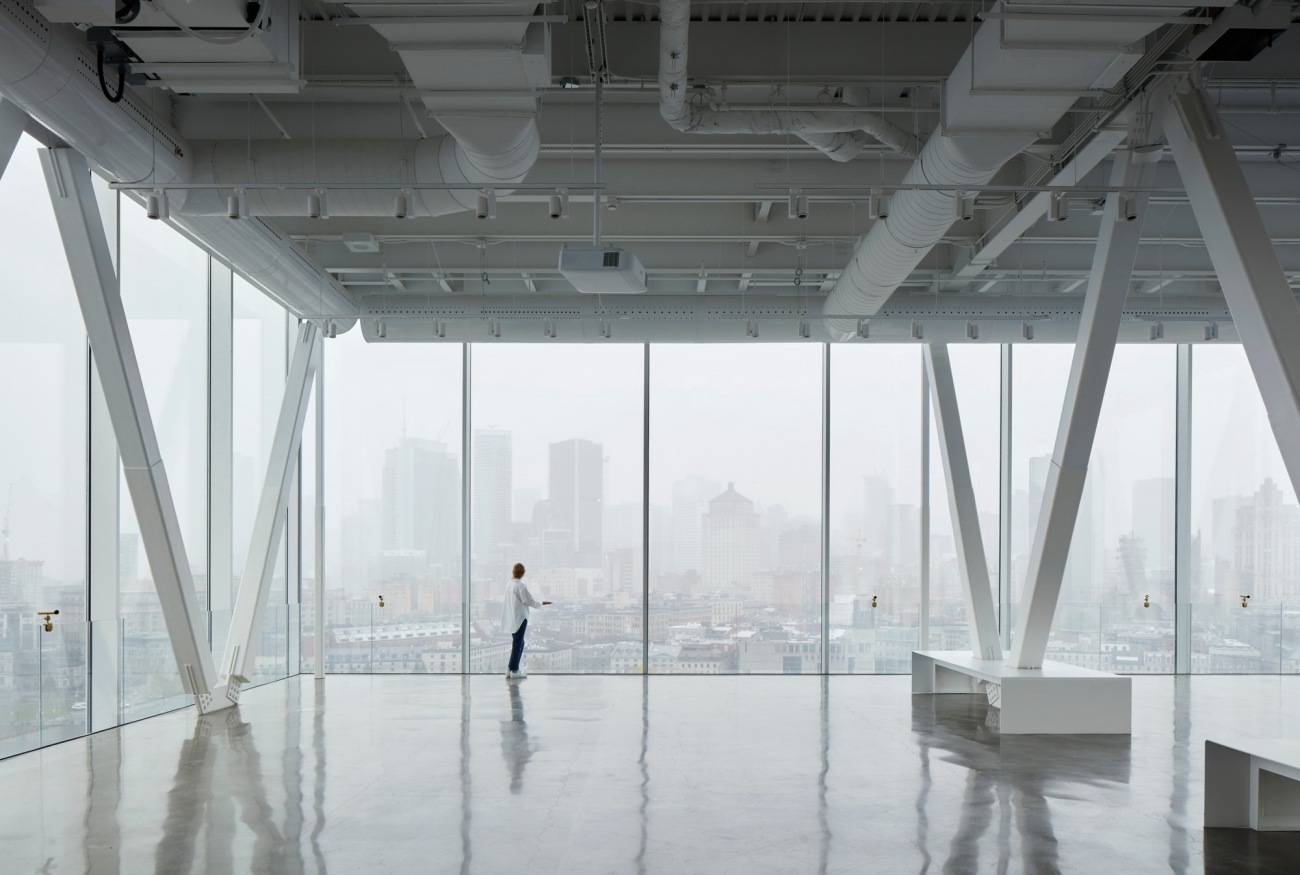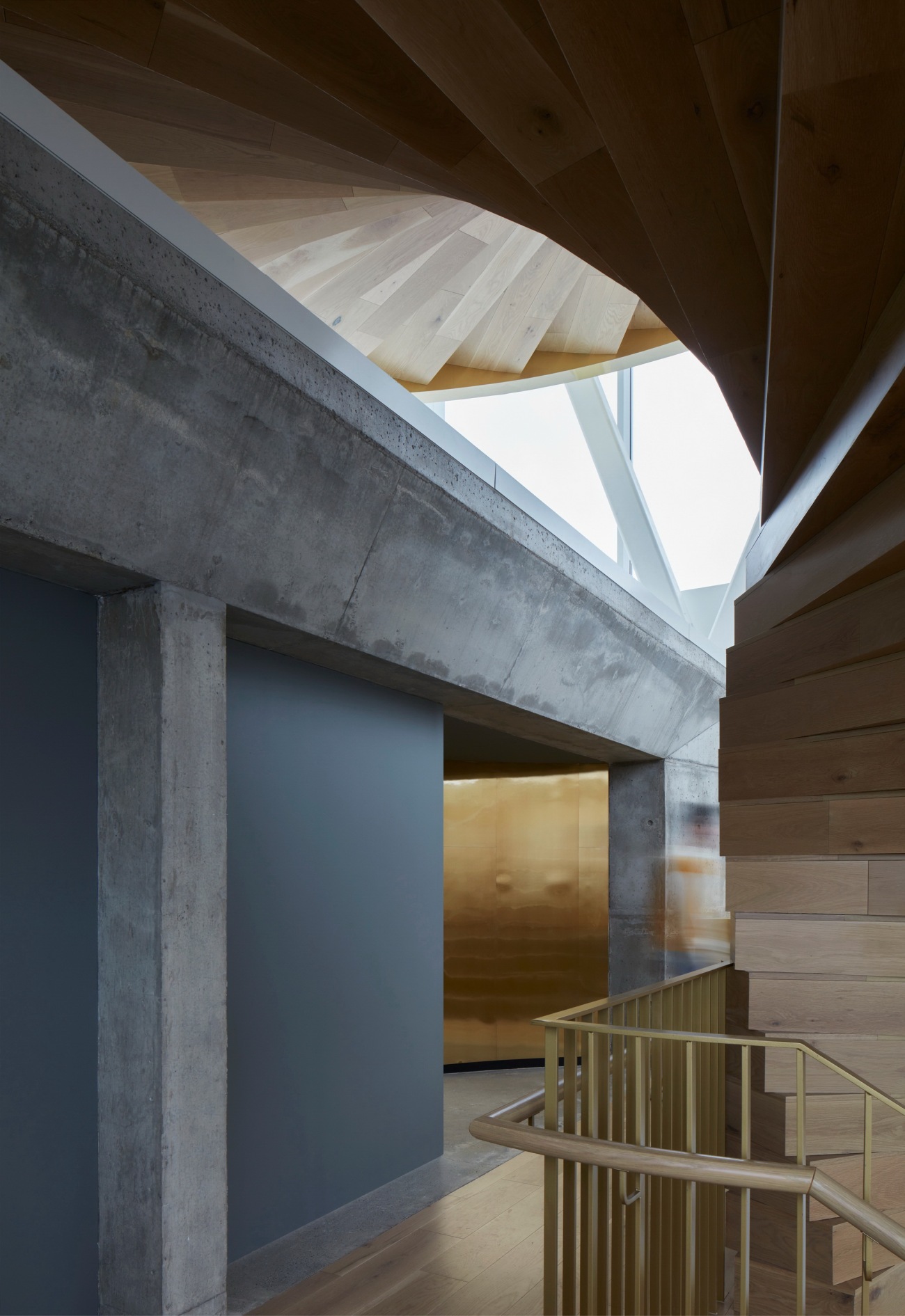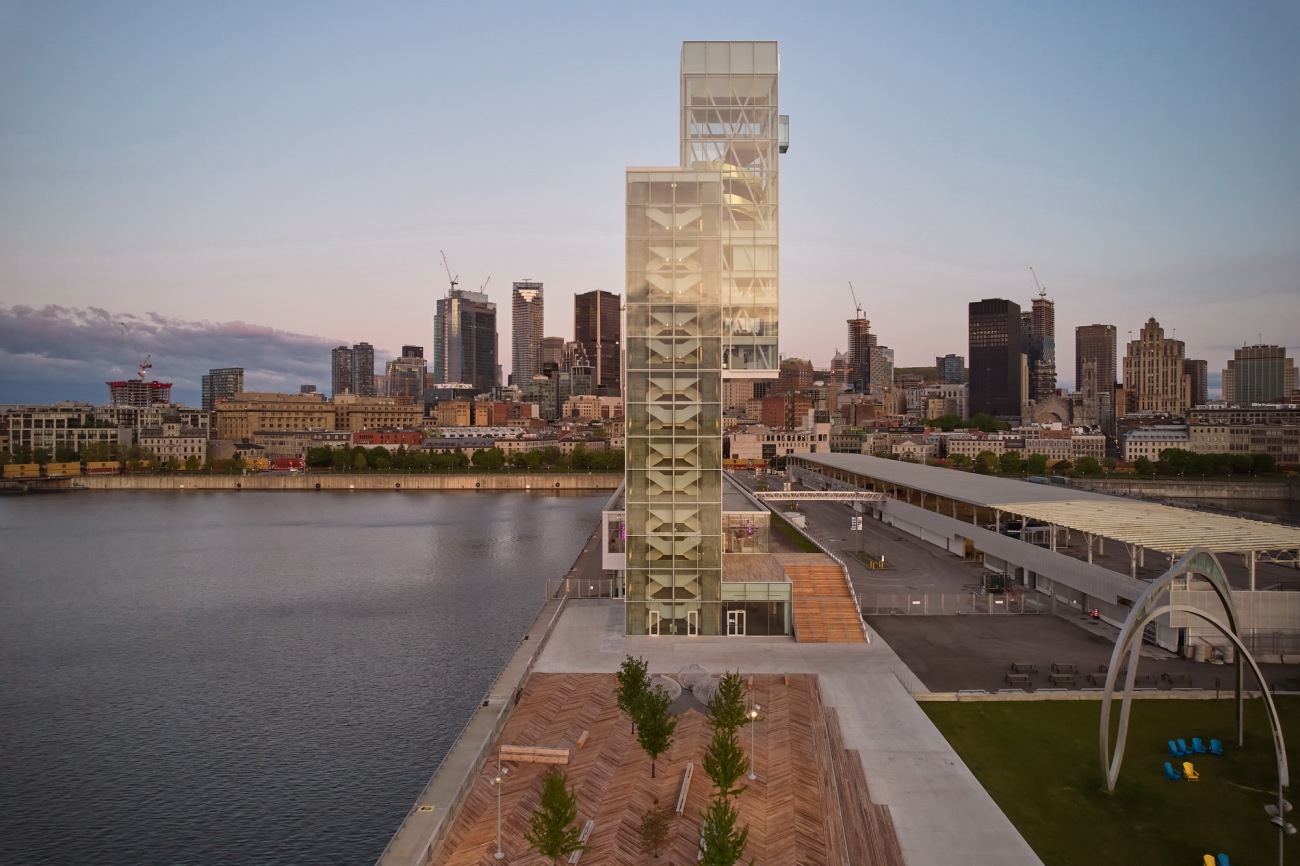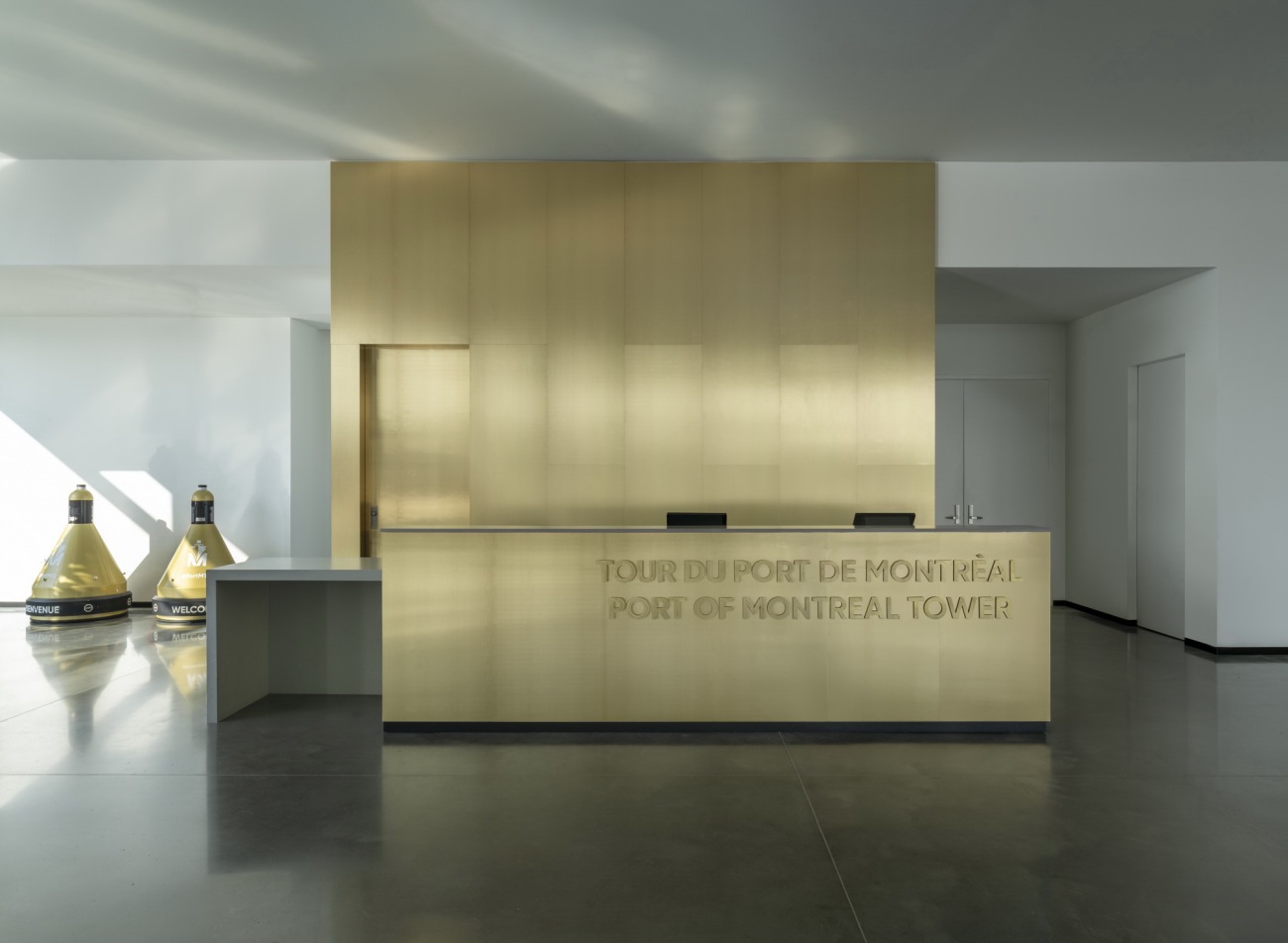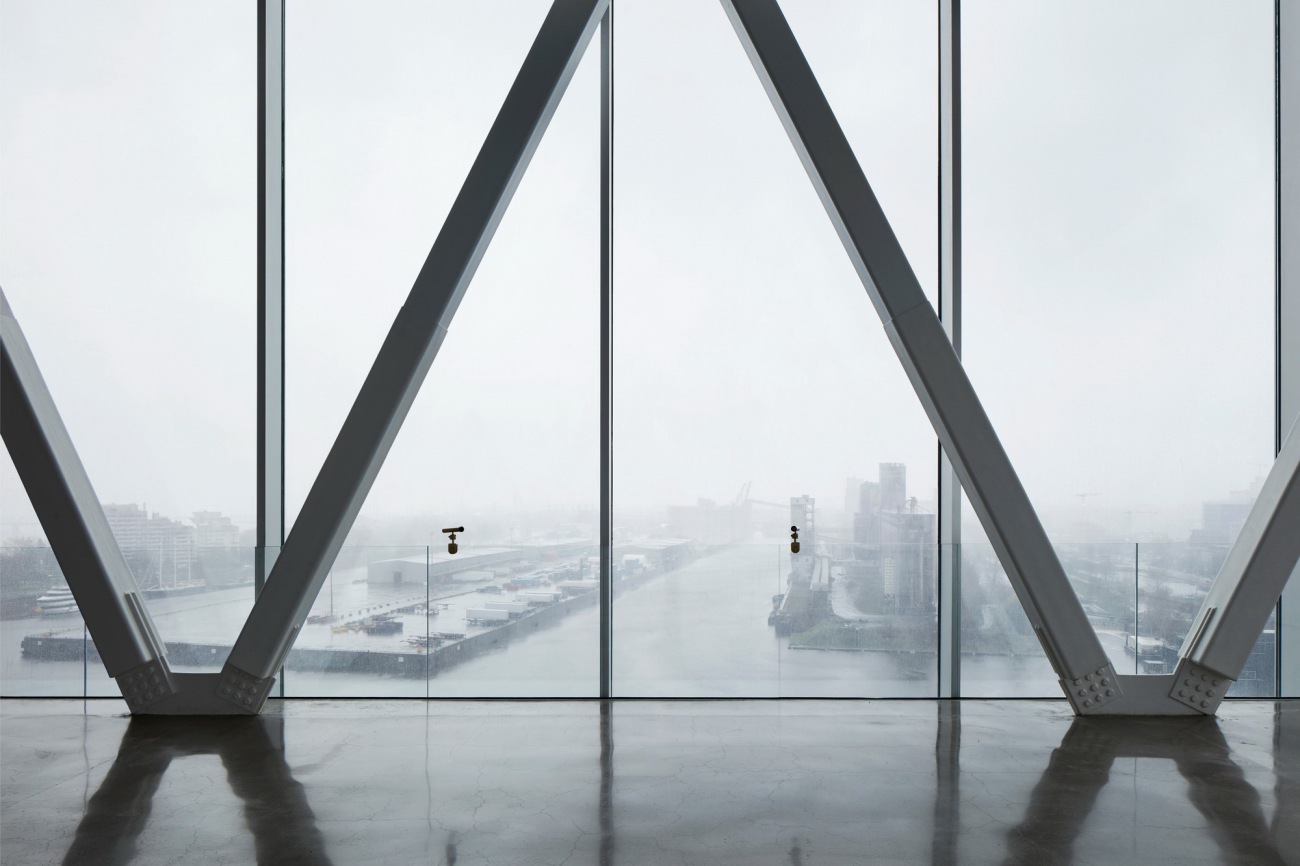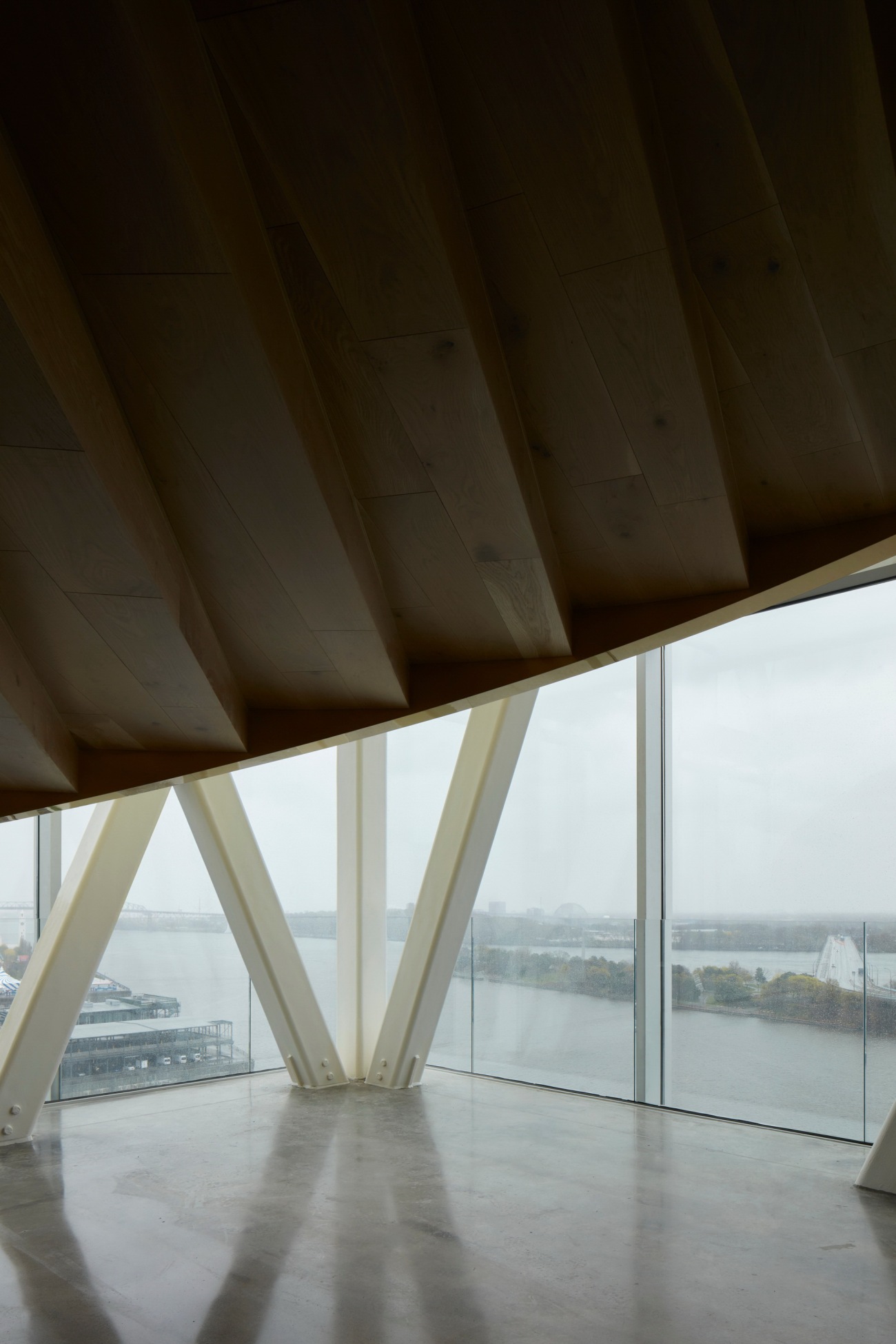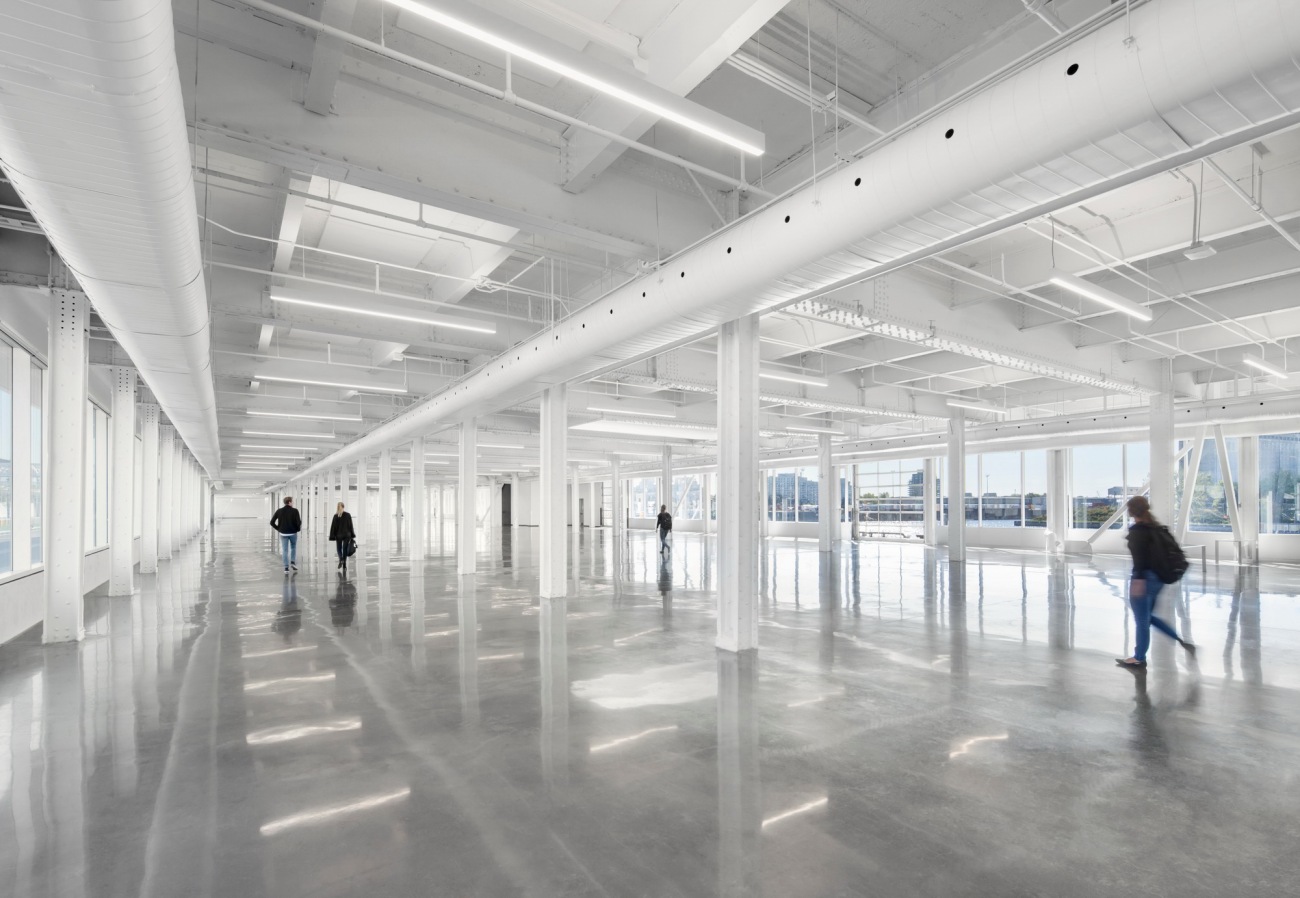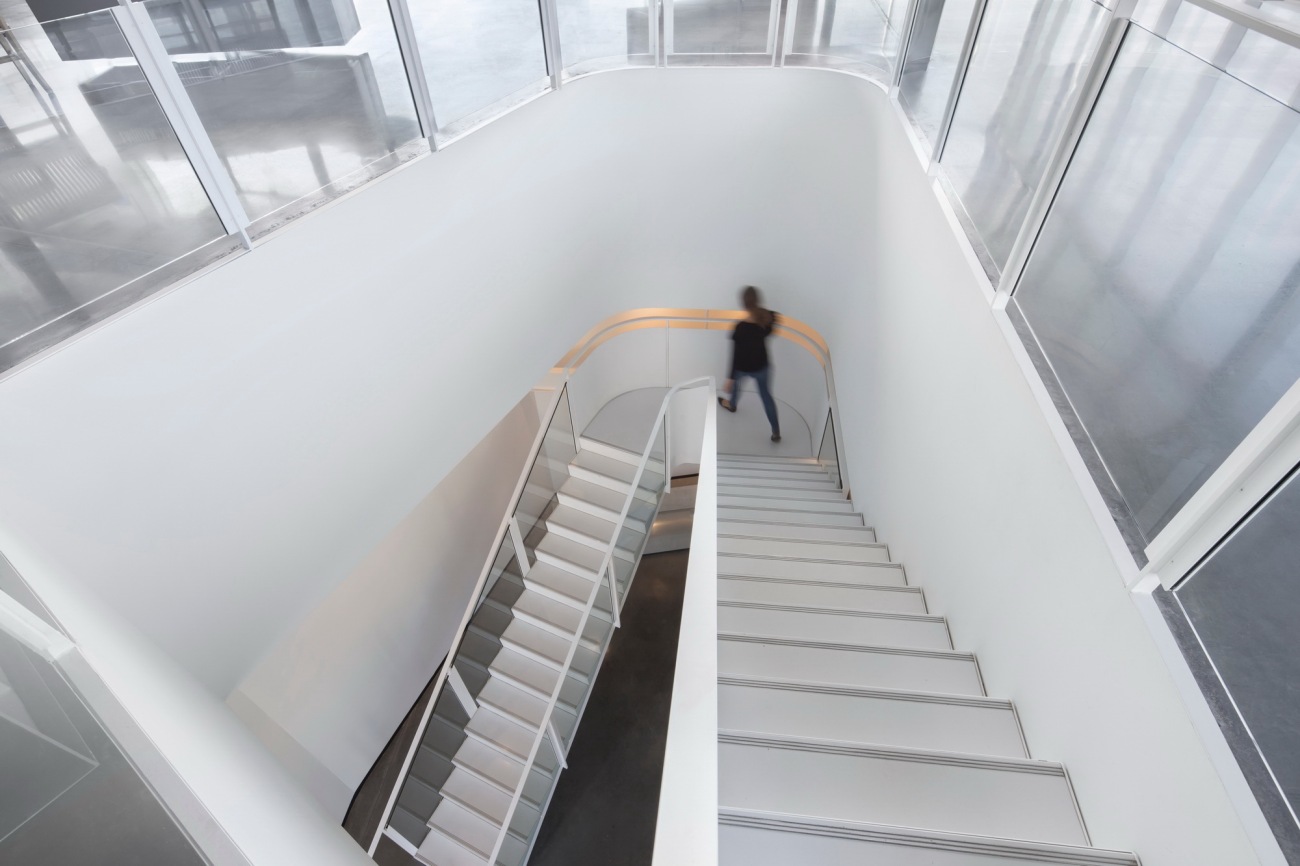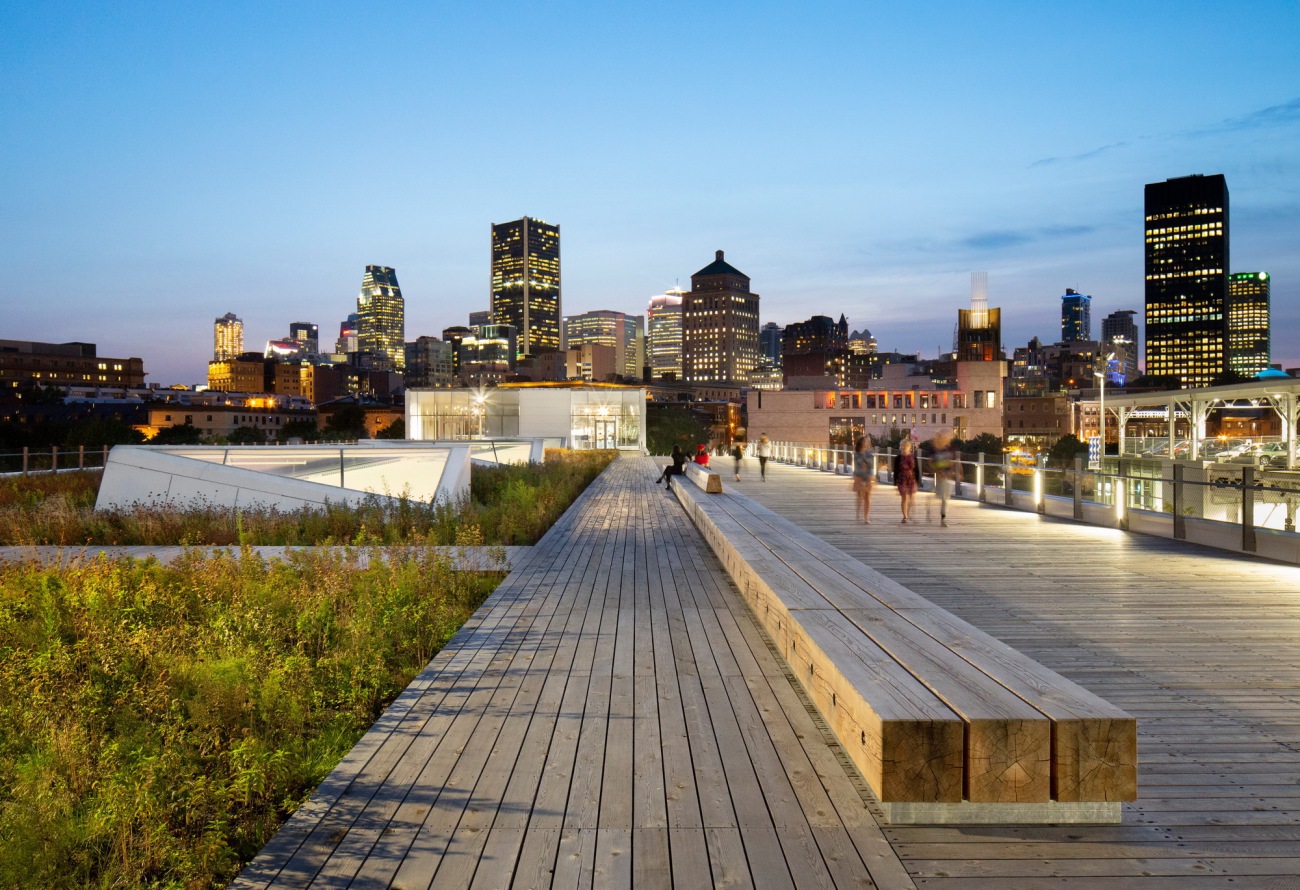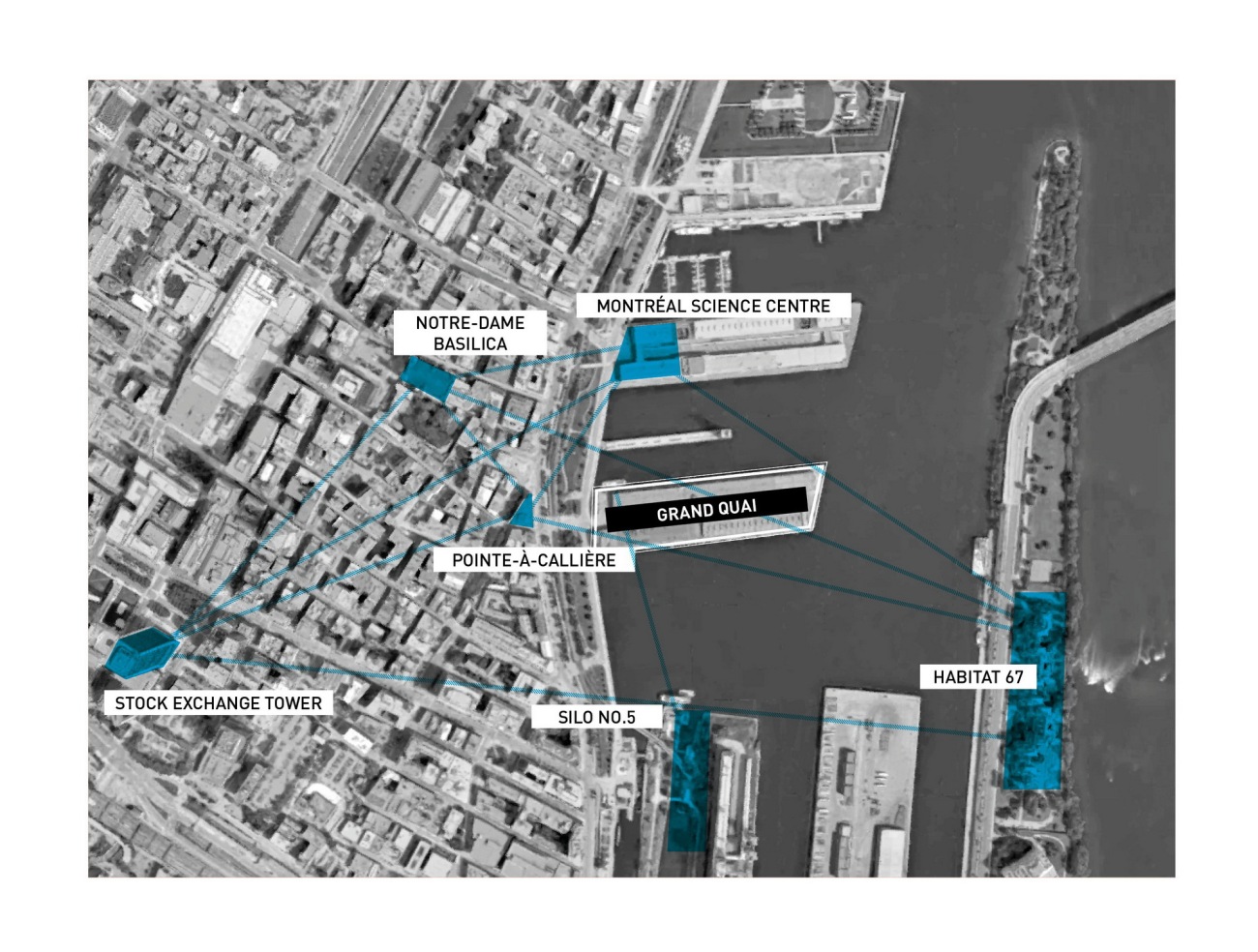| 公司: | Provencher_Roy | NIPPAYSAGE | 类型: | 建筑 |
|---|---|---|---|
| 地区: | 加拿大 | 标签: | 公共空间 | 办公空间 |
蒙特利尔港塔由Provencher_Roy设计,是将一个摇摇欲坠的基础设施复杂体转变为卓越公共景观的巅峰之作。始于2013年,这一综合设计的成果融合了建筑与景观。
The Port of Montréal Tower, designed by Provencher_Roy, is the jewel in the crown of the dramatic transformation of a crumbling infrastructure complex into an exceptional public landscape. Begun in 2013, the fruit of integrated design combines architecture and landscape.
高达65米的蒙特利尔港塔是老港的新地标,提供了城市和河流的壮丽景色。就像一座灯塔一样,它成为乘船抵达的游客的视觉地标,并标志着进入港口的入口。对于蒙特利尔居民来说,它标志着码头和一个大型公共广场存在于老蒙特利尔的步行区域。
Rising 65 metres high, this new icon of the Old Port offers a spectacular view of the city and the river. Like a lighthouse, it acts as a visual landmark for visitors arriving by boat and signals the entrance to the Port. For Montréalers, it marks the presence of the quay and a large public square from the pedestrian zones of Old Montréal.
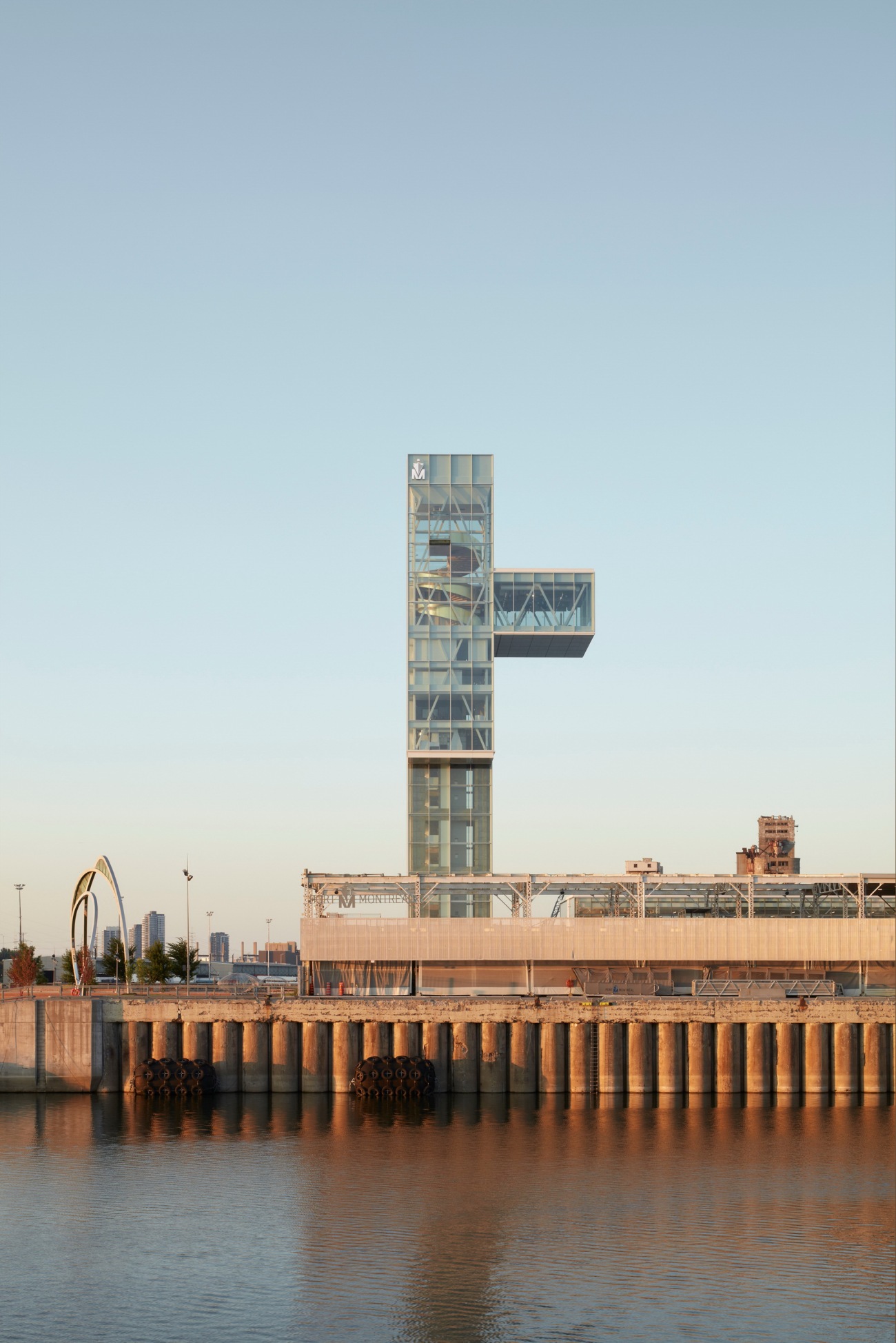 | 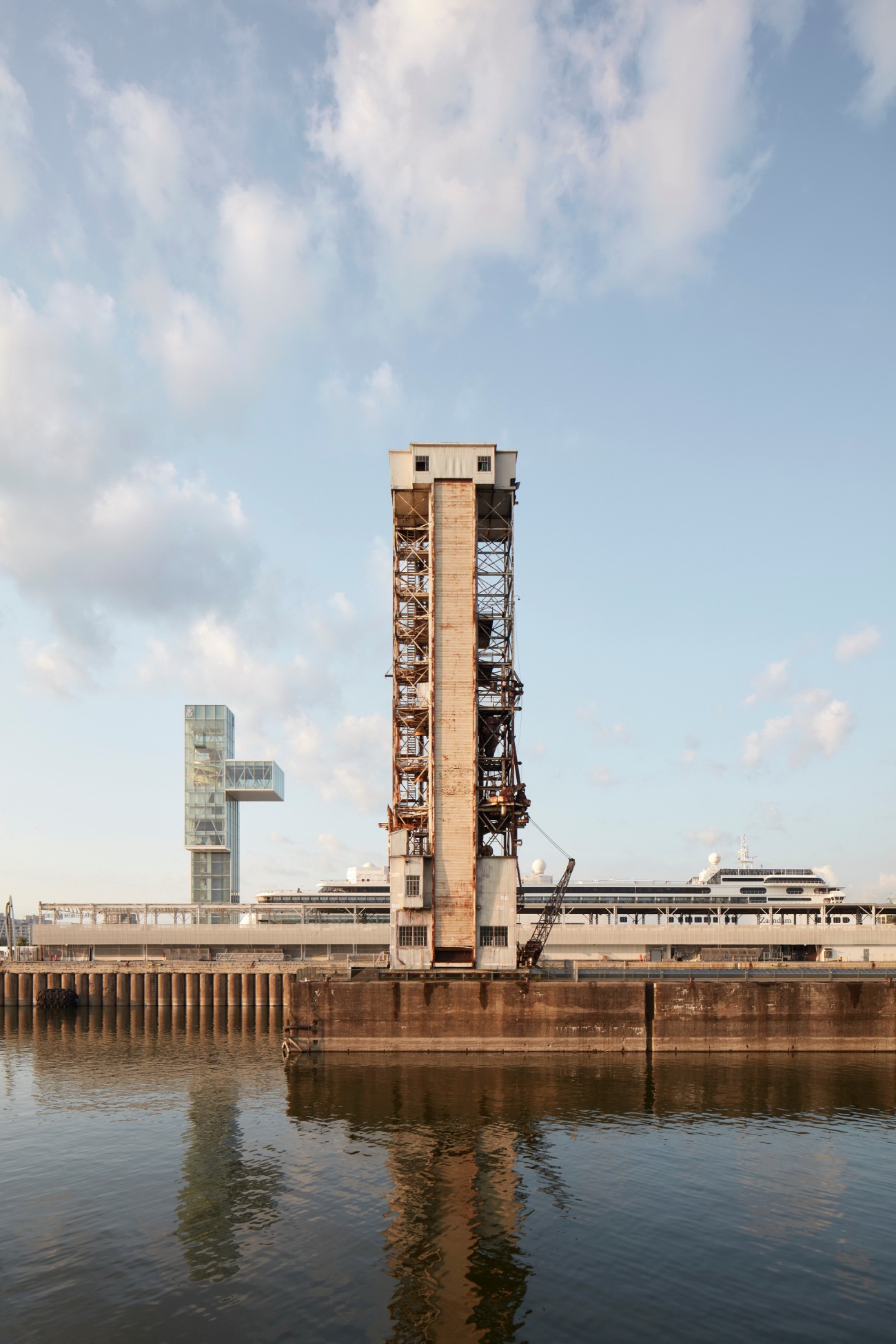 | 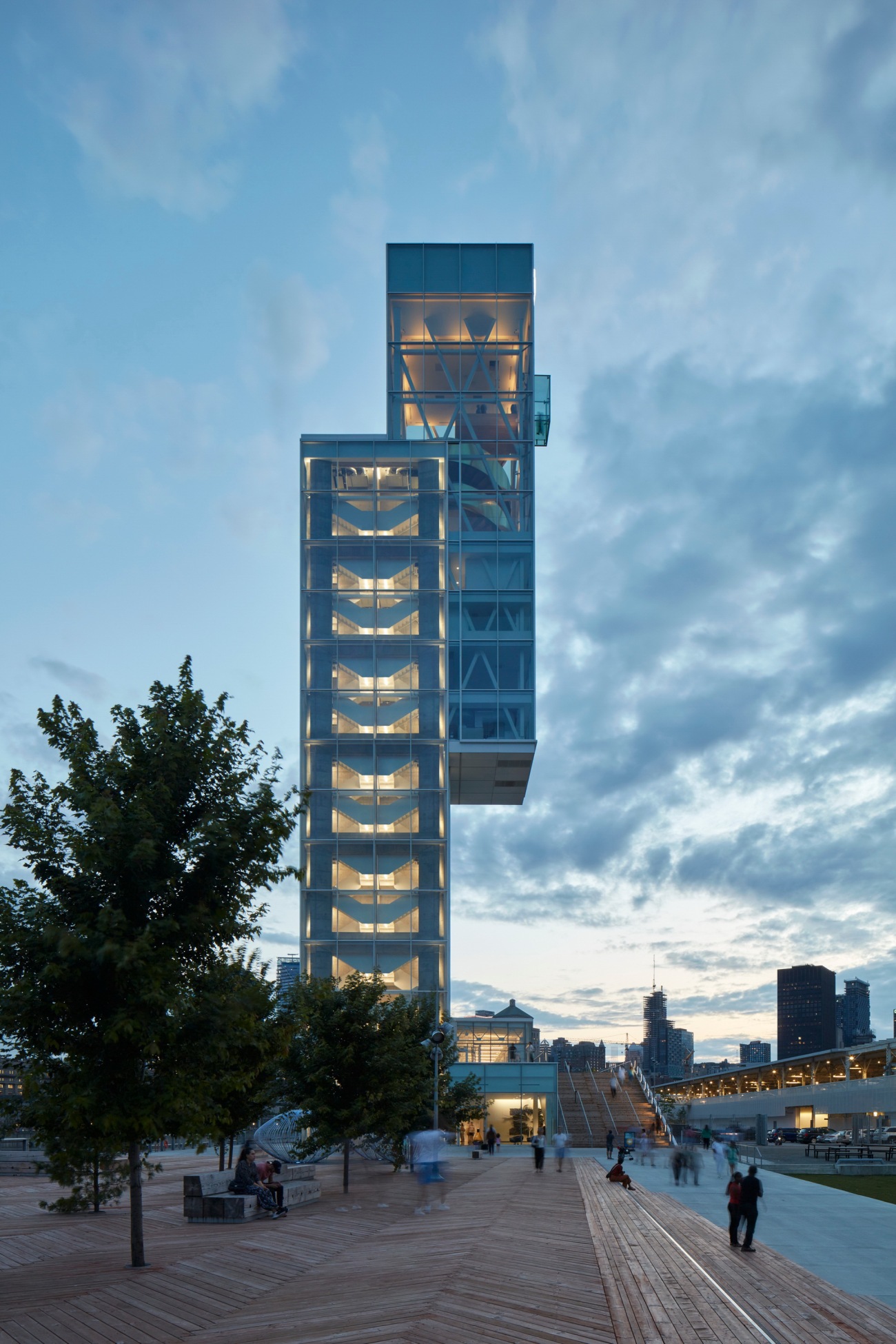 |
"作为蒙特利尔人,我们往往忘记了我们生活在一个岛上。我们有一个绝佳的机会创造一个庆祝我们两个自然标志的地方:雄伟的圣劳伦斯河和皇家山,"建筑师、主要合作伙伴和首席设计师Sonia Gagné解释道。
"We tend to forget, as Montréalers, that we live on an island. We had a fantastic opportunity to create a place that celebrates our two natural icons: the majestic Saint-Lawrence River and Mount Royal," explains Sonia Gagné, Architect, Principal Partner and Lead Designer.
65米高的大胆悬臂式塔楼宣告了大码头作为蒙特利尔旅游者和居民的标志性目的地。它俯瞰着一个新的高架长廊,将城市与滨水区重新连接,支持重新开发的滨河长廊,并在老港创造了一个独特的城市聚集场所。
With its daring cantilevers, the 65-metre tall tower heralds the Grand Quai as a signature destination in Montréal for tourists and Montréalers alike. It overlooks a new elevated promenade that reconnects the city to its waterfront, anchors a redeveloped riverwalk, and creates a unique urban gathering place in the Old Port.
这座塔楼是该地区最高的建筑之一,它标志着码头和一个新的供步行者和乘游轮的游客使用的公共空间。它为游客提供方向,并创造了一个视觉参考点,过渡于高架长廊、游轮码头和码头尖端的新公共空间之间,该空间沿着斜坡通向河流:起始之地。
One of the tallest structures in the area, the Tower signals the quay and a new public space for pedestrians and visitors arriving by cruise ship. It orients visitors and creates a visual point of reference that transitions between the raised esplanade, cruise terminal, and new public space at the tip of the quay which slopes down to the river: the Place des commencements.
"Sonia Gagné解释说:“我们希望通过提供高质量的公共空间、塔楼的美丽景观、通往河流的通道以及为市民提供的空间,吸引蒙特利尔人来到码头的尽头,以此来发表一种宣言。”
"We wanted to make a statement to attract Montréalers to the end of the pier thanks to quality public spaces, beautiful views from the Tower, access to the river, and a space for citizens," explains Sonia Gagné.
▽公共空间,Public space
除了赋予建筑独特的轮廓外,悬臂还带来了360度的全景视野。从塔楼顶部,游客可以在所有方向上看到地标,包括Habitat 67、Silo No.5、圣母大教堂、圣劳伦斯河和皇家山。位于码头上方55米的观景台可以俯瞰整个城市和河流,为乘游轮抵达的游客提供了对蒙特利尔的难忘引导。观景台设计灵活,可作为一流的活动场地和接待厅使用。
Beyond lending the building its distinctive silhouette, the cantilever also opens up 360-degree views. From the top, visitors can see landmarks in all directions, including Habitat 67, Silo No.5, Basilique Notre-Dame, the Saint Lawrence River, and Mount Royal. An observation deck set 55 metres above the quay commands sweeping vistas over the city and river, offering visitors arriving by cruise ship an unforgettable introduction to Montréal. The observation deck is designed to be flexibly programmed and can double as a premier event space and reception hall.
从观景台升起的雕塑螺旋楼梯通向更高的亭台,亭台比观景台高出10米,它是一个宝石般的玻璃室,悬挑在建筑外墙上,游客可以走到上面,俯瞰水面和壮丽的景色。楼梯被金色栏杆包裹,透过建筑外墙熠熠生辉,可以从周围的城市看到。其形式让人联想到19世纪定义蒙特利尔街景的室外楼梯。随着上升,雕塑般的金色楼梯展开,唤起了港口鼎盛时期主要出口的小麦植物的花冠形状。
A sculptural helicoid staircase rises from the observation deck to the belvedere, 10-metres higher, which is a jewel-like glass chamber cantilevered off the façade where visitors can step out over the water and into the spectacular view. Wrapped in gold-coloured balustrades, the staircase shines through the façade and can be seen from the surrounding city. Its form recalls the 19th-century exterior stairways that define Montréal’s streetscape. Unfurling as it rises, the sculptural gold staircase evokes the crowns of the wheat plants, the port’s main export during its heyday.
塔楼的设计唤起了该地点丰富的工业遗产,最初是四个巨大的储粮仓库所在地,后来成为了一个游轮码头。它的比例取自低矮的港口建筑,但将它们竖立起来,形成了类似粮仓的外观。钢结构以及结构性混凝土框架和核心通过玻璃幕墙展现出来,向曾经定义港口的宏伟工业形式致敬。总体而言,核心和框架为塔楼的外观增添了独特的深度感。
The tower’s design evokes the site’s rich industrial heritage, originally home to four giant wheat-storing hangars before becoming a cruise terminal. It takes its proportions from the low-slung port buildings but stands them on end, creating a form that resembles a grain elevator. The steel structure, as well as the structural concrete frame and core, read through the glazed façade, paying homage to the monumental industrial forms that once defined the port. Together, the core and frame add a distinctive sense of depth to the tower's elevation.
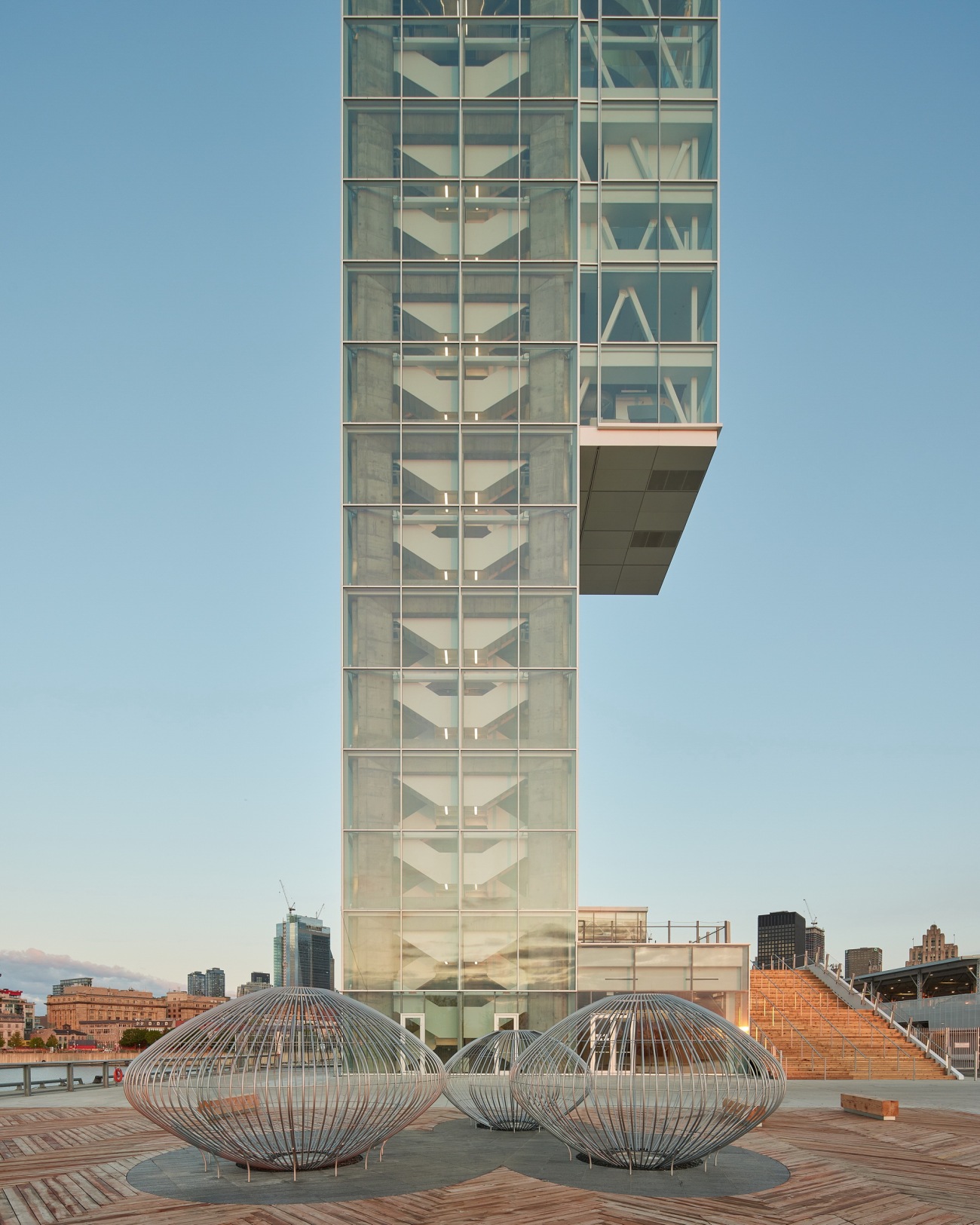 | 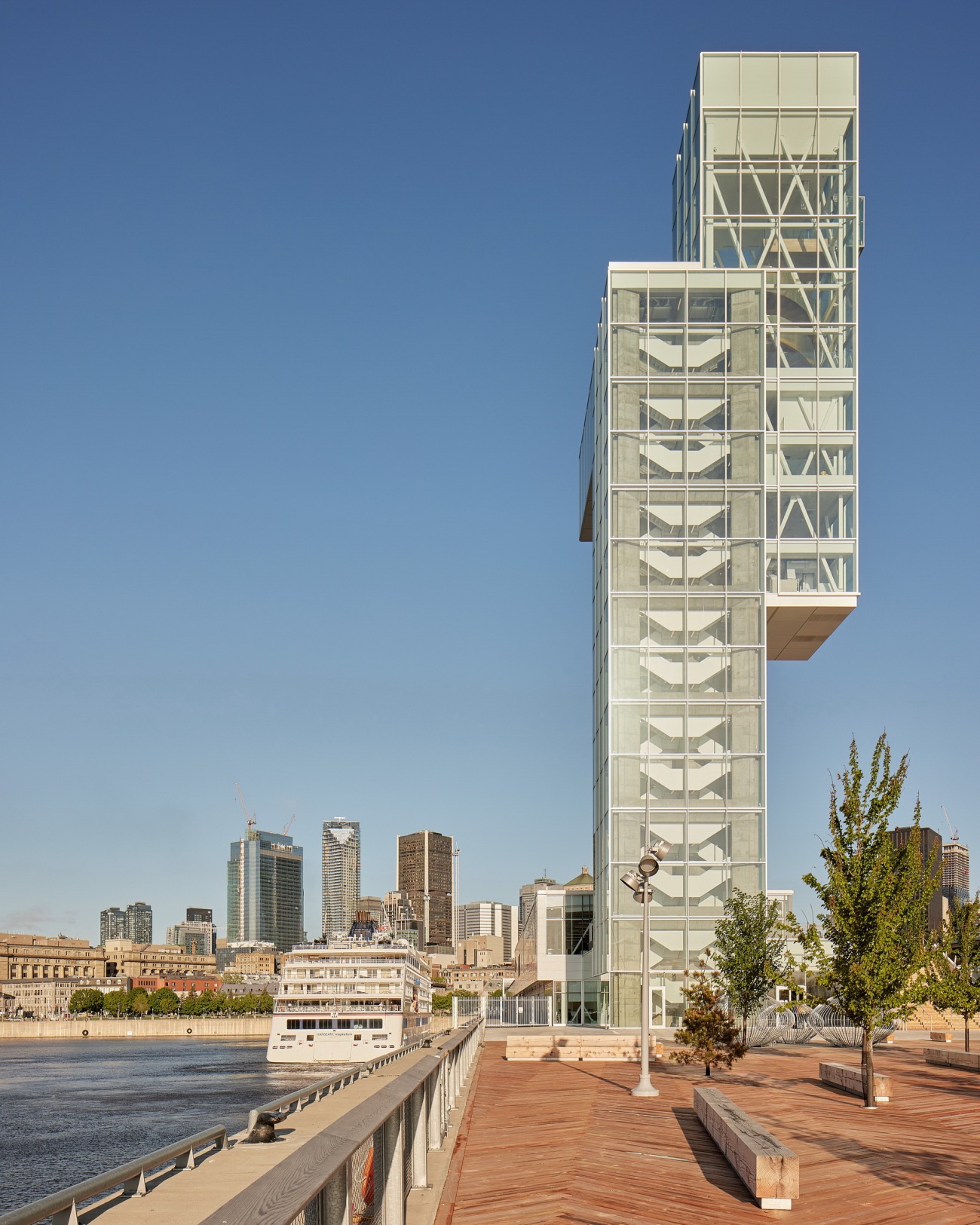 |
“我们选择通过幕墙让塔楼的结构可见,以庆祝该地点的工业遗产。码头旁边矗立着Convoyeurs塔,几代人前曾用于从船只卸载谷物,这是对它的一种参考,” Sonia Gagné补充道。
"We chose to let the Tower’s structure be visible behind a curtain wall to celebrate the site’s industrial heritage. Adjacent to the pier stands the Tour des Convoyeurs, which was used to unload grain from ships generations ago – it’s a reference to it," adds Sonia Gagné.
▽塔楼立面图,Tower elevation view
Grand Quai 重建背景
Grand Quai redevelopment background
最初建于1899年的蒙特利尔港Alexandra码头成为世界上最繁忙的谷物出口中心之一。覆盖了大部分码头表面的四个大型储仓后来被改造成为游轮和停车场的海运终点站,码头也被改建为汽车交通区。这些改变使城市与其滨水区隔开,将码头变成了一件令人生畏的基础设施。随着时间的推移,尽管进行了大量的维护投资,该综合体逐渐恶化,进一步破坏了城市结构。
Originally built in 1899, the Alexandra Pier in the Port of Montréal became one of the world’s busiest grain exporting hubs. The four large storage hangars which covered most of the pier’s surface were subsequently transformed into a maritime terminal for cruise ships and parking lots, the pier having been converted for automobile traffic. These transformations severed the city from its riverfront, turning the pier into a forbidding piece of infrastructure. Over time, and despite significant maintenance investments, the complex deteriorated, further disrupting the urban fabric.
Provencher_Roy在2013年赢得了蒙特利尔港务局发起的设计竞赛,该竞赛旨在现代化码头设施,以满足对游轮停靠不断增长的需求。建筑师们彻底重新思考了人行道和车辆通往场地的通道;现在,码头在地面层欢迎游轮乘客。新的流通模式打开了空中长廊的屋顶,并合理化了车辆交通模式,允许汽车停在仓库内,而不影响行人的体验。
Provencher_Roy won the design competition launched by the Montréal Port Authority in 2013, which sought to modernize the terminal's facilities to meet growing demand for cruise ship docking. The architects completely rethought pedestrian and vehicular access to the site; the terminal now welcomes cruise passengers at ground level. The new circulation pattern opens up the roof of the esplanade and rationalizes vehicle traffic patterns, allowing cars to park in the hangars without disrupting the pedestrian experience.
码头改造成新的公共空间
The pier’s transformation into a new public space
与景观建筑师NIPPAYSAGE合作设计的新景观码头为行人重新提供了他们应有的地位:
“策略是创造一个低调的景观,保留了该地异常丰富的工业历史的重要性,同时为行人创造一个诱人的新目的地。为了与工业背景融为一体,进行了一些简单的大规模的手势。” Josée Labelle,NIPPAYSAGE的景观建筑师、合伙人和创始成员解释道。
Designed in collaboration with landscape architects’ NIPPAYSAGE, the newly landscaped pier gives pedestrians back their rightful place:
"The strategy was to create an understated landscape that preserves the significance of the site's exceptional industrial history, while creating an inviting new destination for pedestrians. Simple gestures were carried out on a grand scale in order to blend in with the industrial context," explains Josée Labelle, Landscape Architect, Partner and Founding Member of NIPPAYSAGE.
NIPPAYSAGE在翻新后的渡轮码头屋顶上创建了一条景观步道,利用尖端的绿色屋顶技术,拥有超过20,000株植物,通过对适应极端热、冷和风条件的物种进行广泛研究而进行选择。被称为“Promenade d'Iberville”的步道通过一个大型呈人字形图案的木制露台,点缀着本土树木,包括魁北克枫树、榆树和白松,这些树种历史上被用于制造船桅,最终通向码头末端的“Place des commencements”。
NIPPAYSAGE created a landscaped walkway on the roof of the renovated ferry terminal, using cutting-edge green roof technology and featuring more than 20,000 plants, selected through extensive research into species adapted to extreme conditions of heat, cold, and wind. Known as the Promenade d'Iberville, the walkway leads to the Place des commencements at the end of the pier via a large wooden terrace with a herringbone pattern, dotted with native trees, including Quebec maples, elms, and white pines historically used to make boat masts.
这条步行路线完善了旧港的公共空间网络,并且以示范性的方式重新建立了城市与圣劳伦斯河之间的联系。
This pedestrian route completes the network of public spaces in the Old Port and, in an exemplary way, reestablishes links between the city and the St. Lawrence River.
“我们的客户要求建设世界一流的游轮码头,而我们认为我们应该为他们提供更多。通过将曾经破败的工业场地转变为包容且可访问的公共空间,我们为整个社区注入了新的生机,并提升了城市的生活质量,” Sonia Gagné总结道。
"Our client asked for a world-class cruise terminal, and we thought we should give them more than that. By transforming a once decrepit industrial site into inclusive and accessible public spaces, we’ve breathed new life into the whole community and enhanced the city’s quality of life," concludes Sonia Gagné.
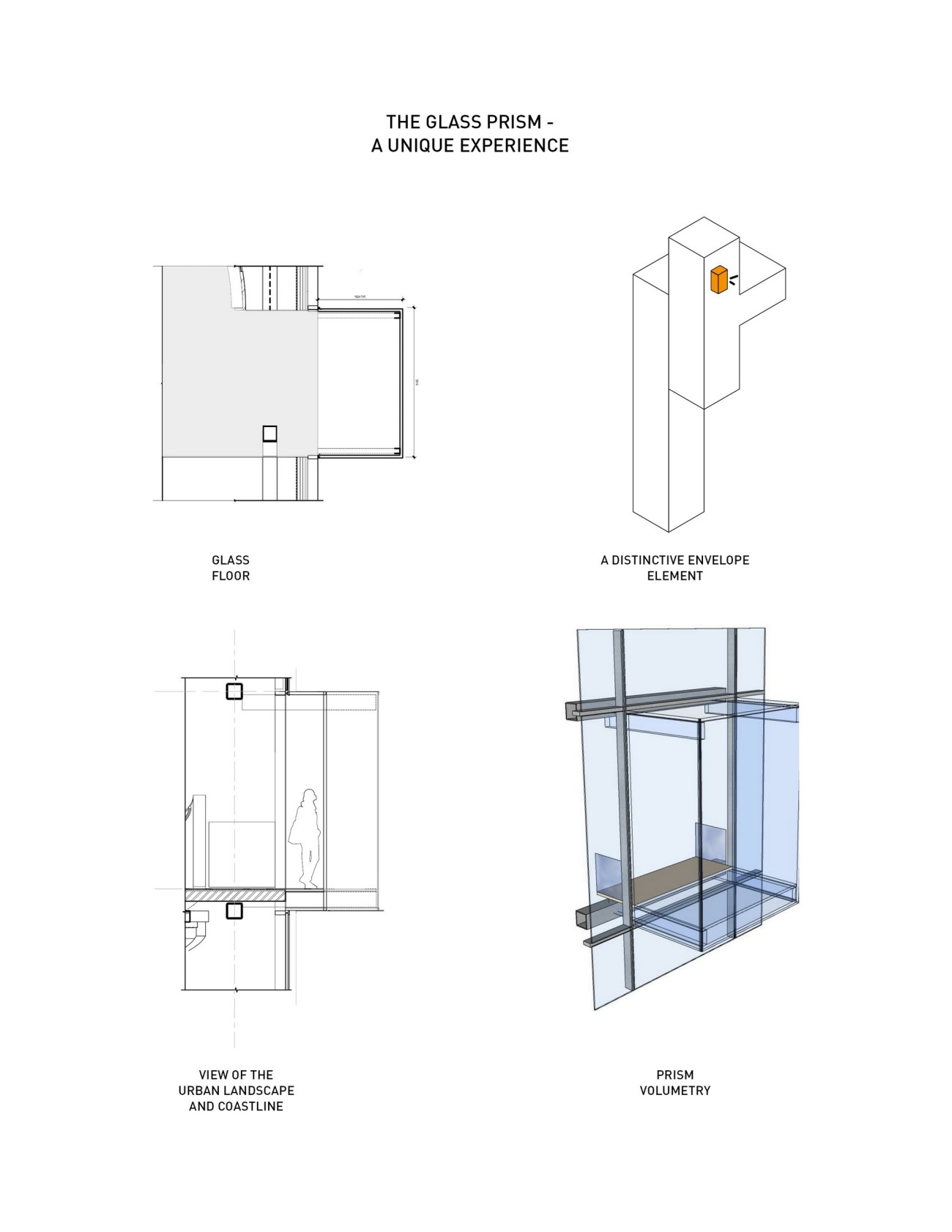 | 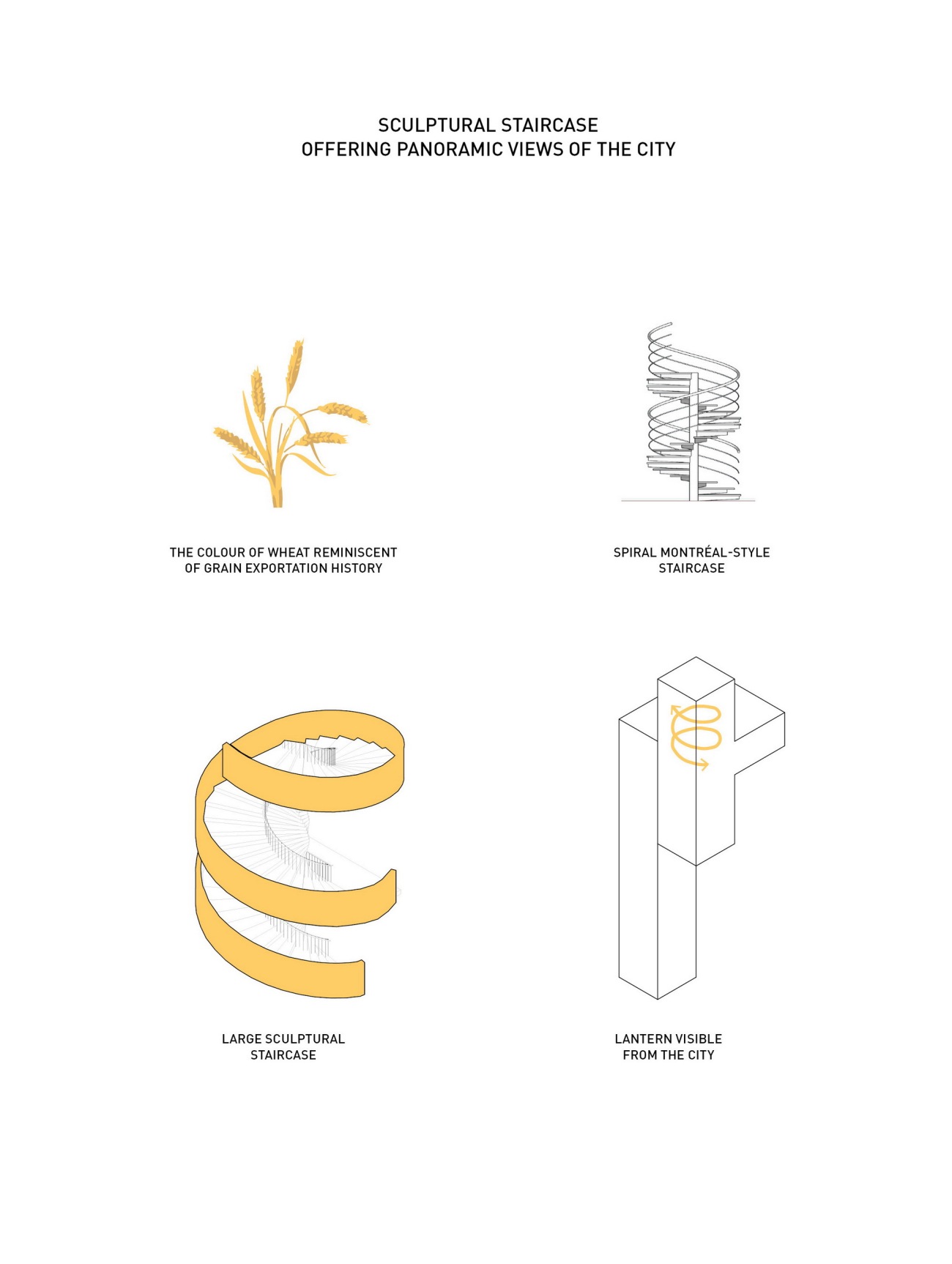 | 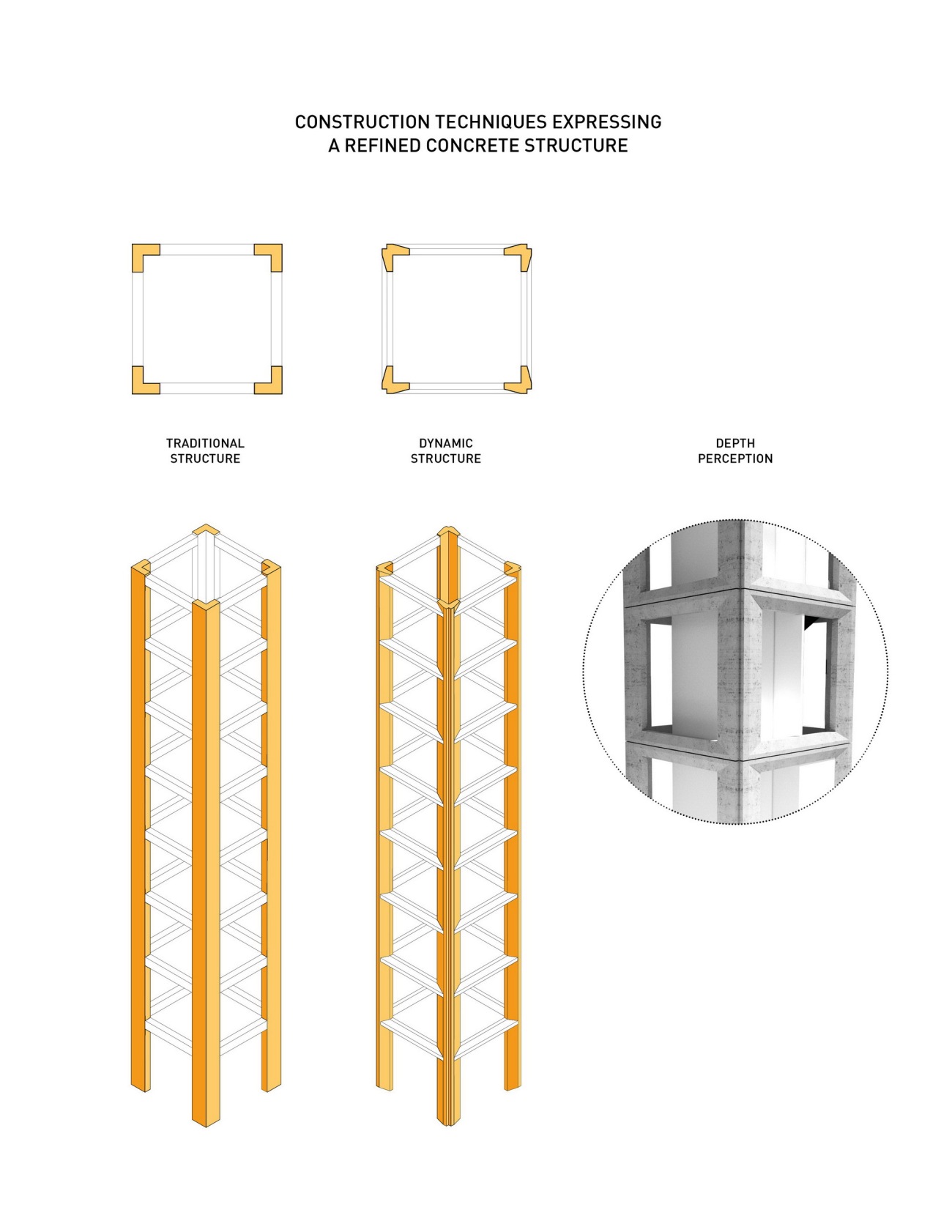 |
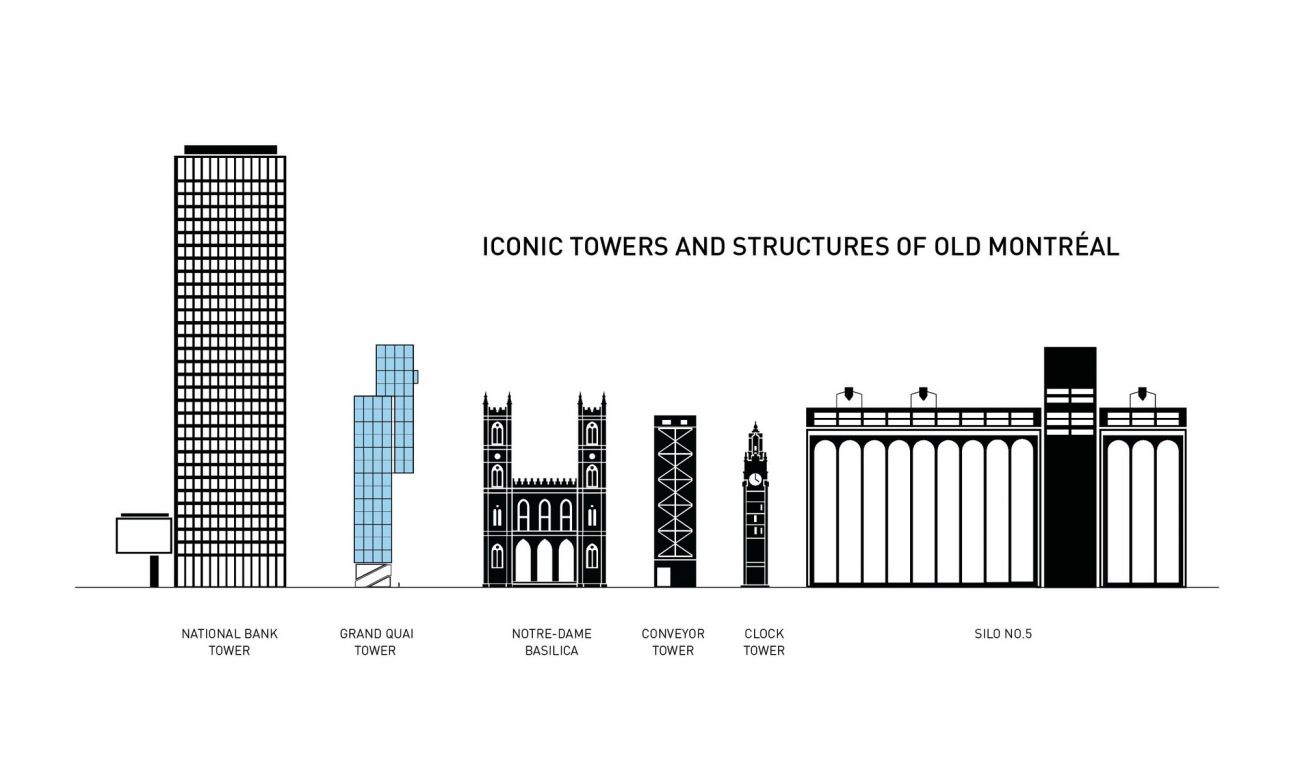 |  |  |
Technical sheet
Client: Administration portuaire de Montréal (AMP)
Address: 200 rue de la Commune Ouest, Montréal, Québec, H2Y 4B2
Year: 2013-2023
Surface Area: 38 000 m²
Architect: Provencher_Roy
Landscape: NIPPAYSAGE
Structure: NCK
Electromechanical: Pageau Morel
Civil: GÉNIPUR
Maritime Infrastructure: WSP Group
Structural Glass: Elema
Lighting: CS Design
Consultant: Arup
Builder: Pomerleau
更新日期:2024-01-18 17:08:34
非常感谢 Provencher_Roy 与 NIPPAYSAGE 带来的精彩项目, 查阅更多Appreciations towards Provencher_Roy and NIPPAYSAGE for sharing wonderful work on hhlloo. Click to see more works!
